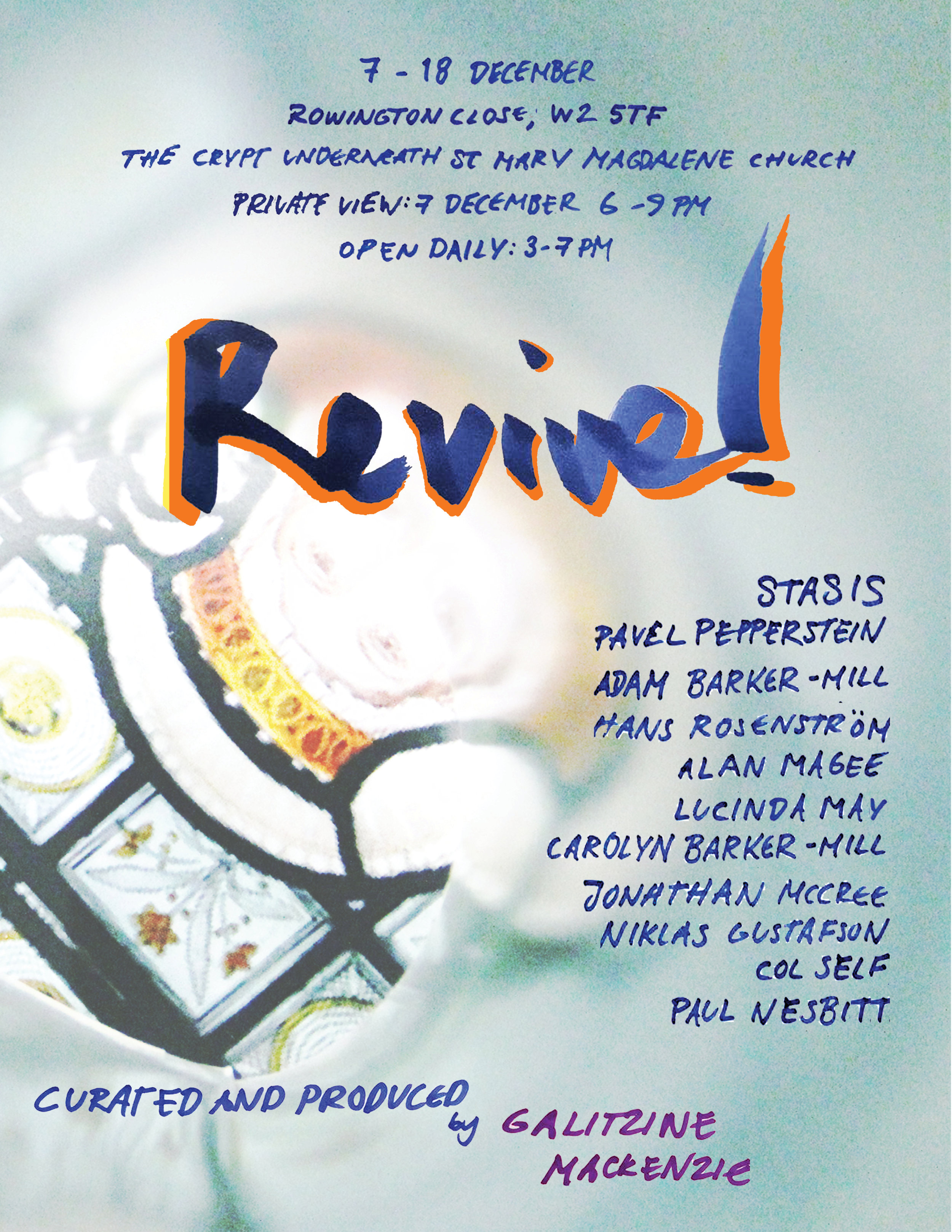

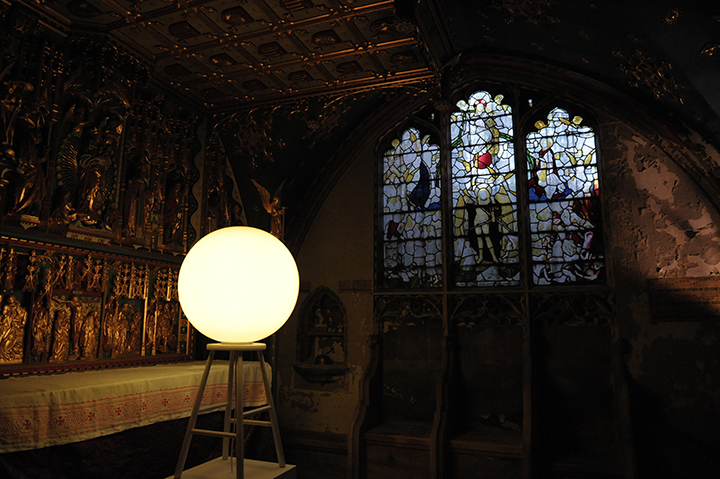
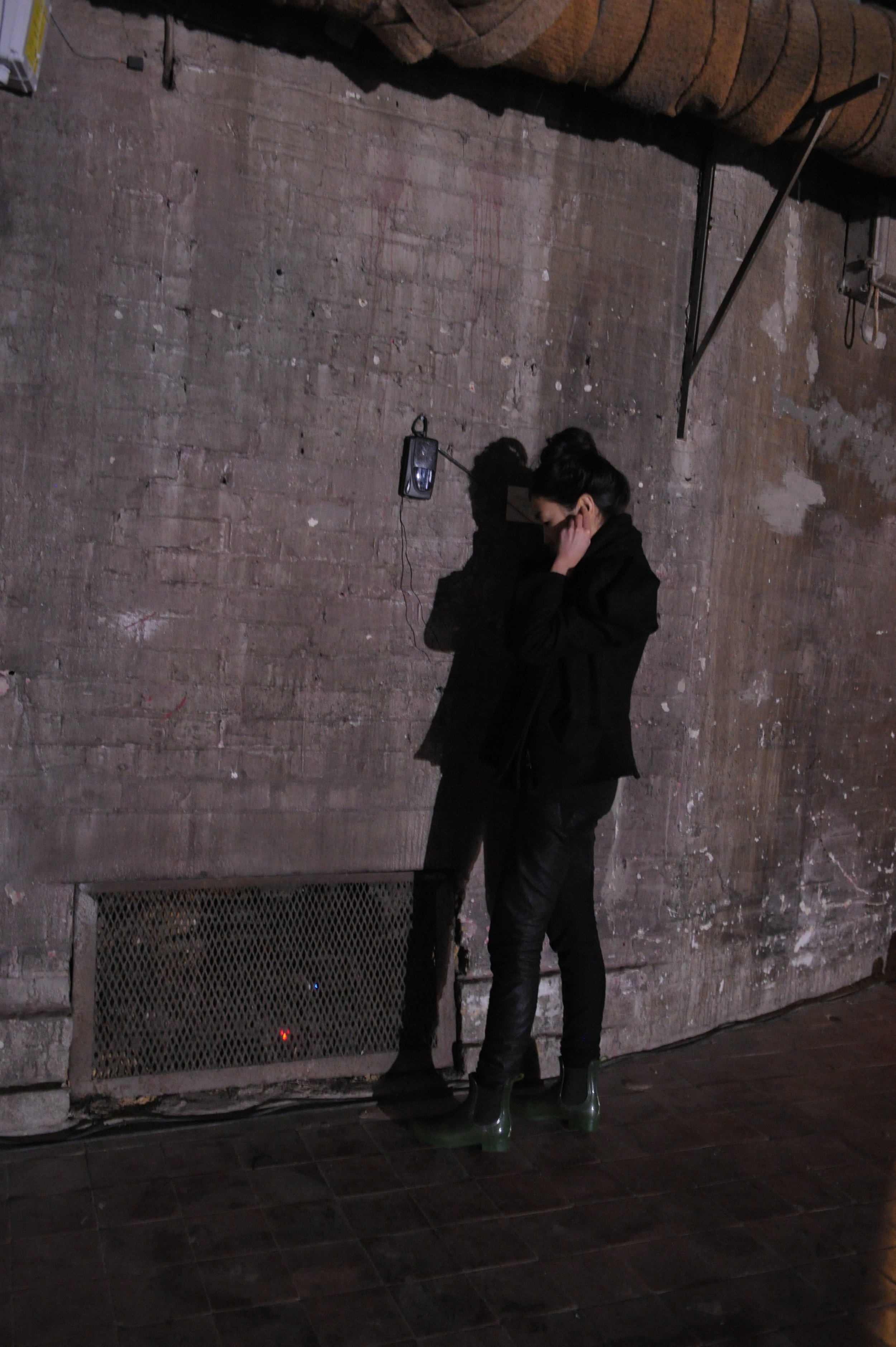



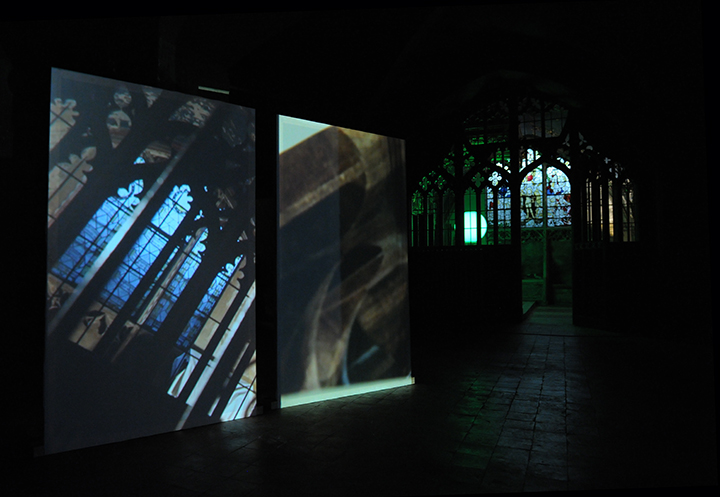

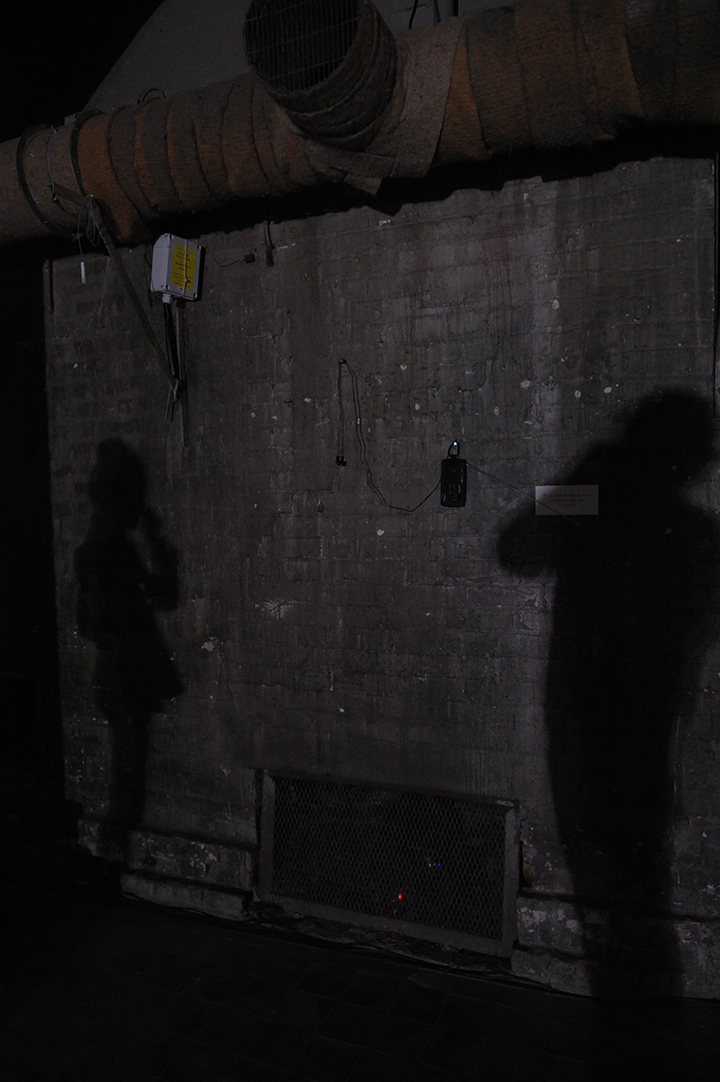
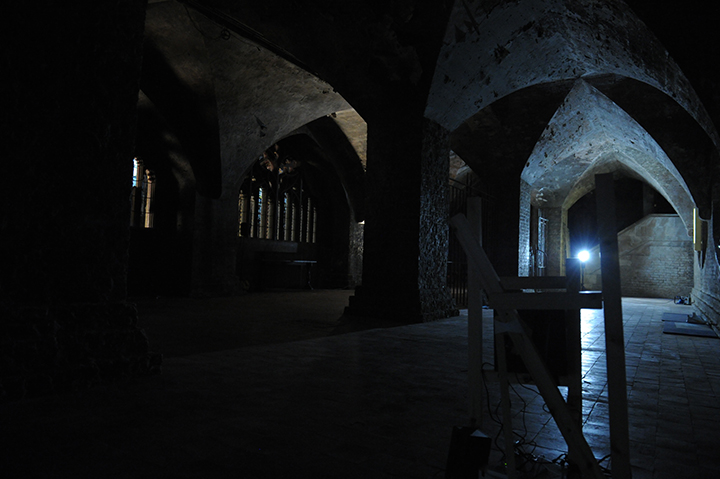
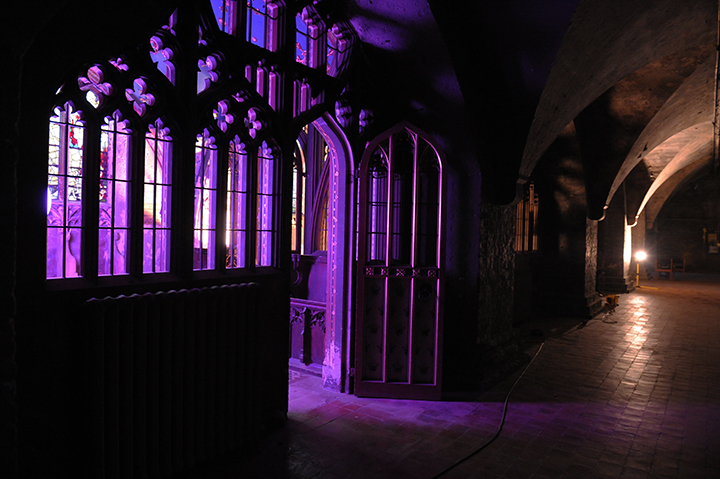
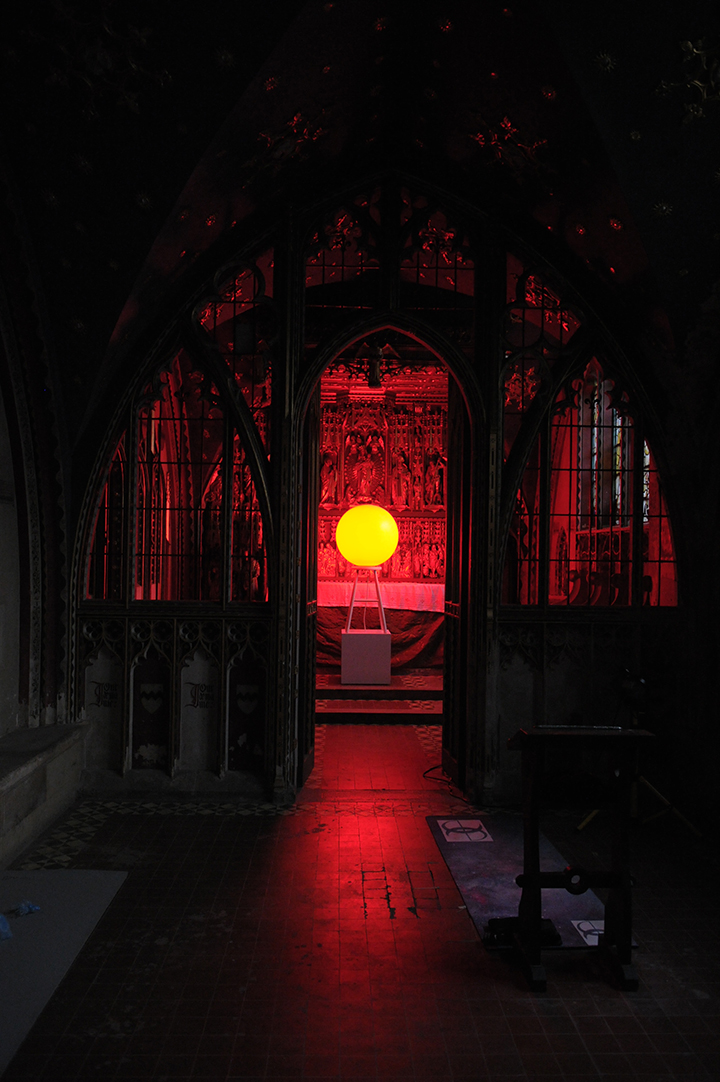
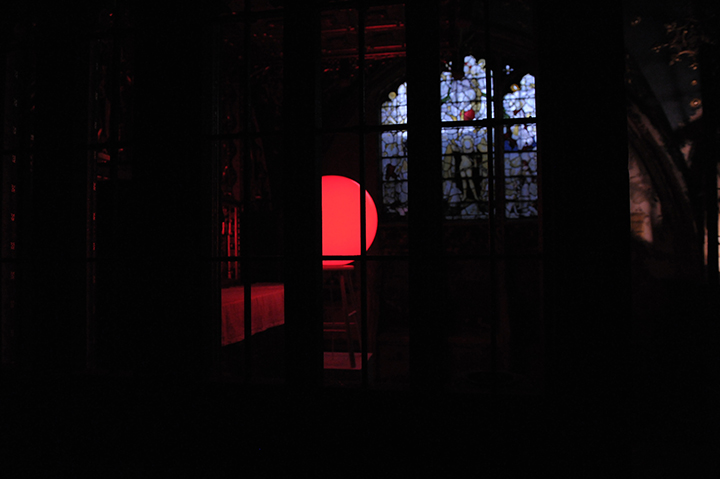
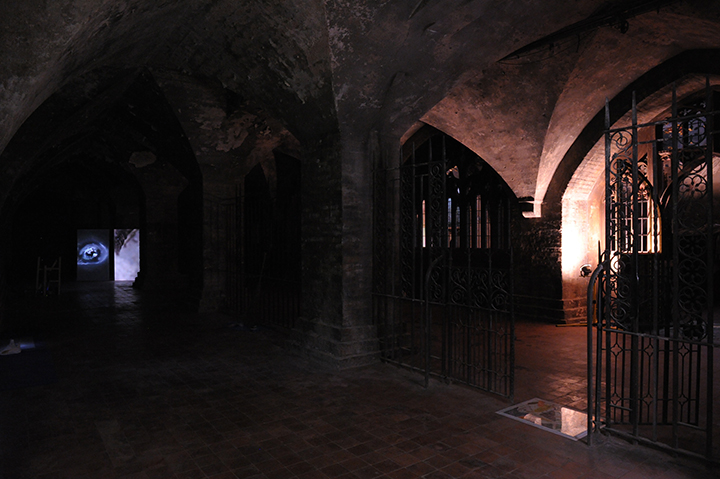
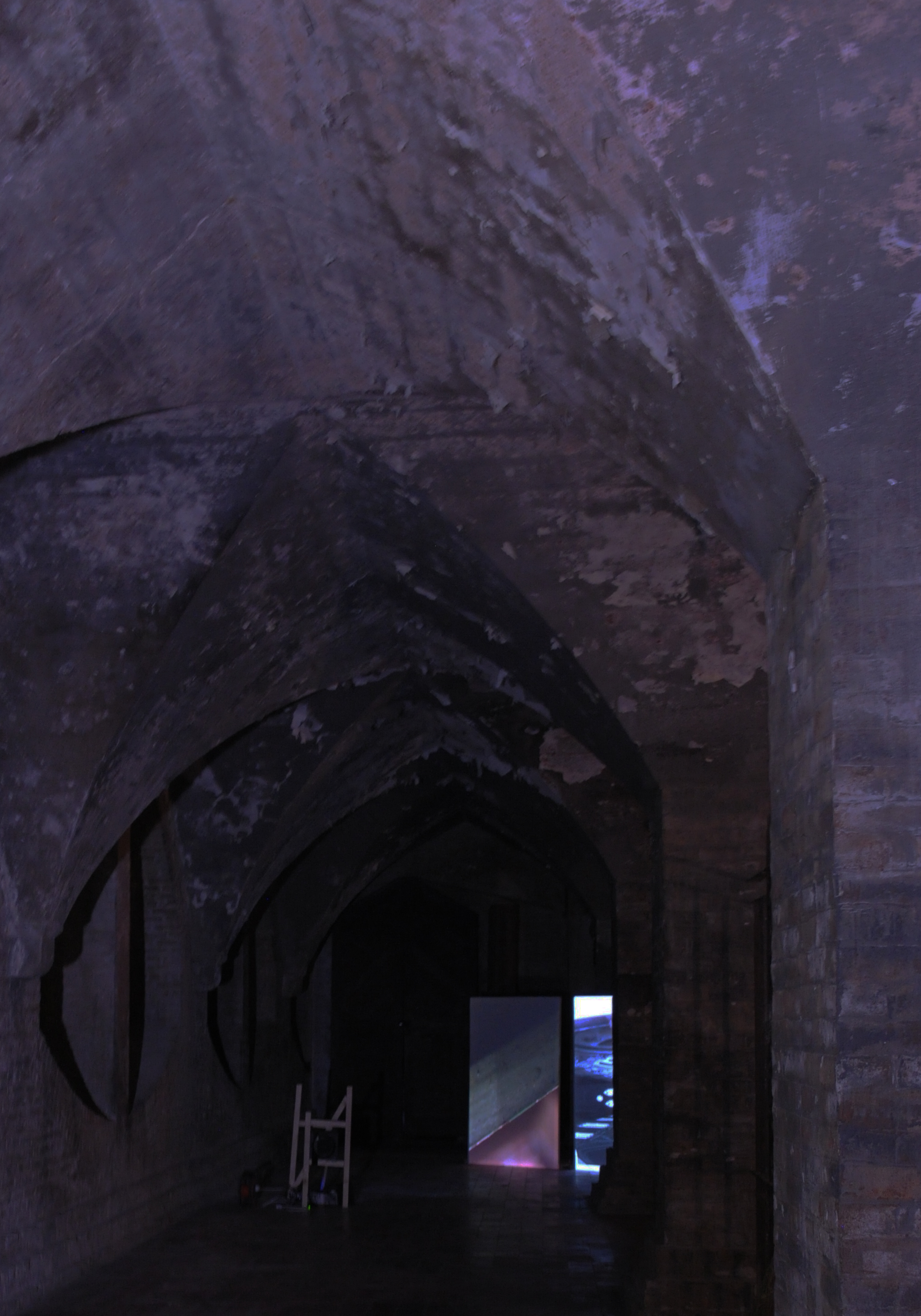



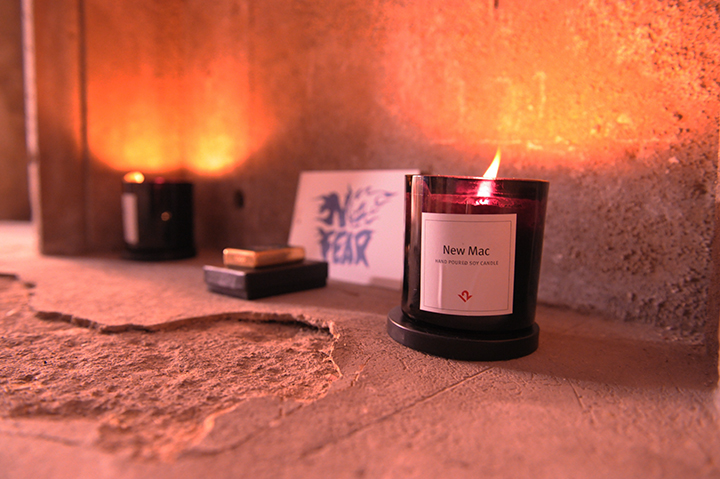
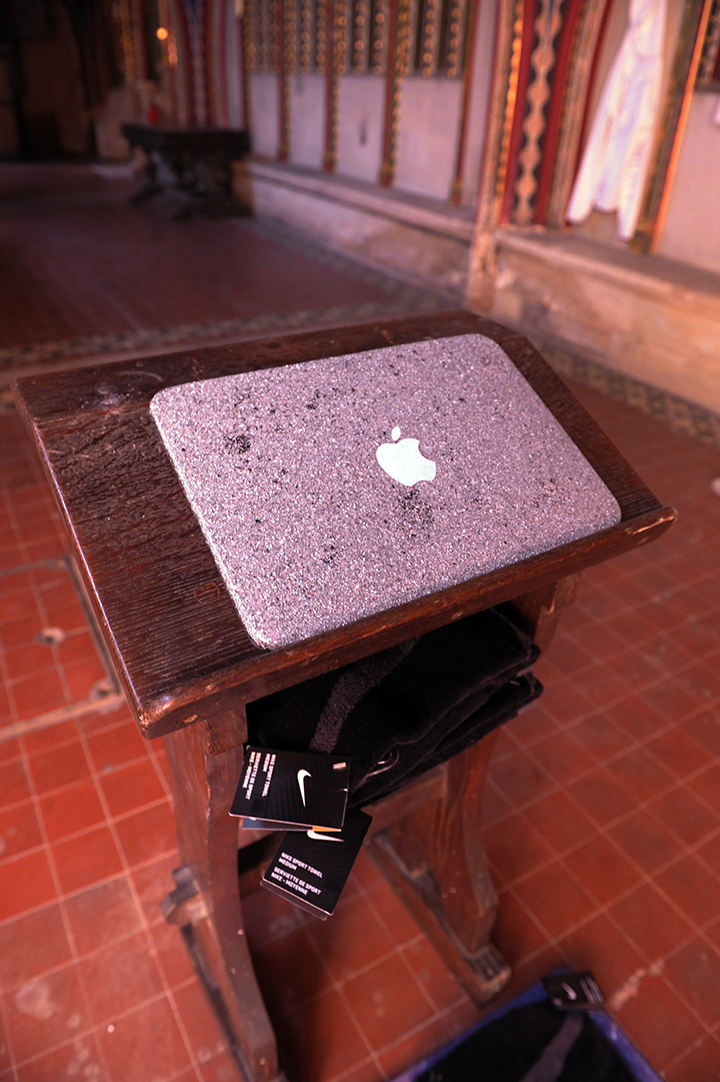
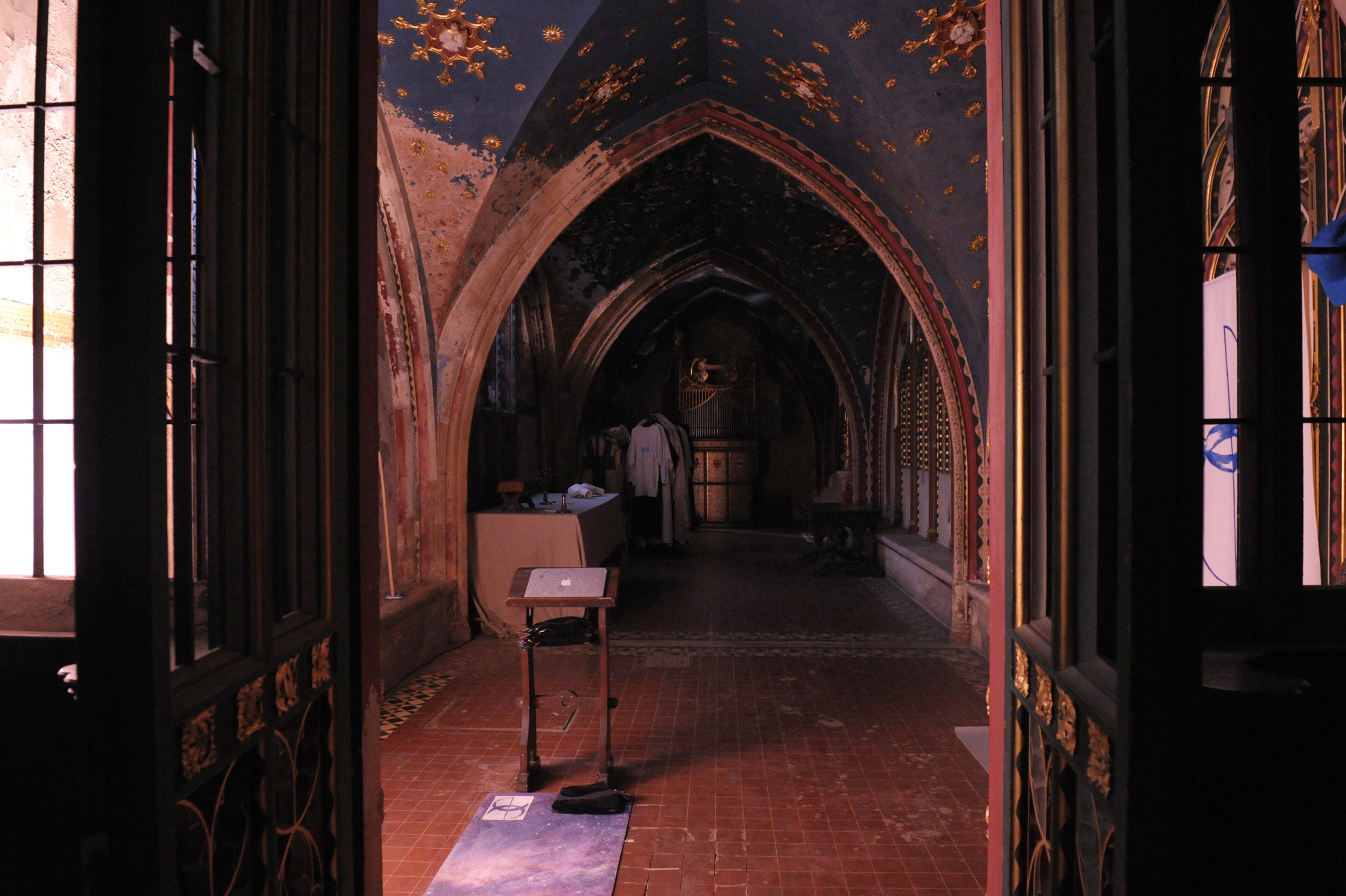
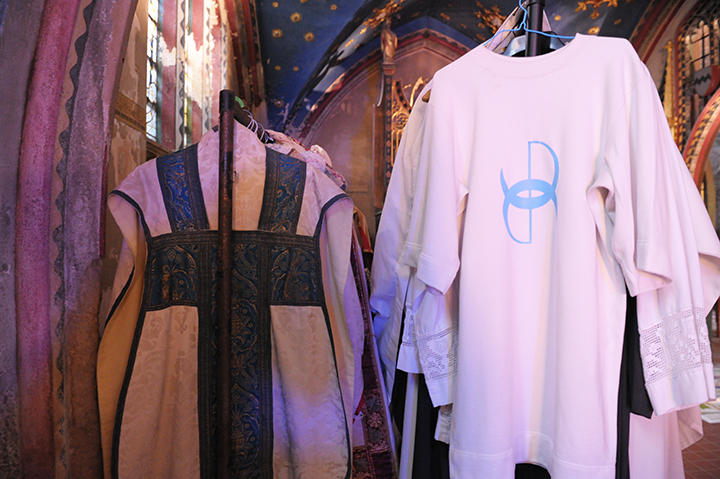

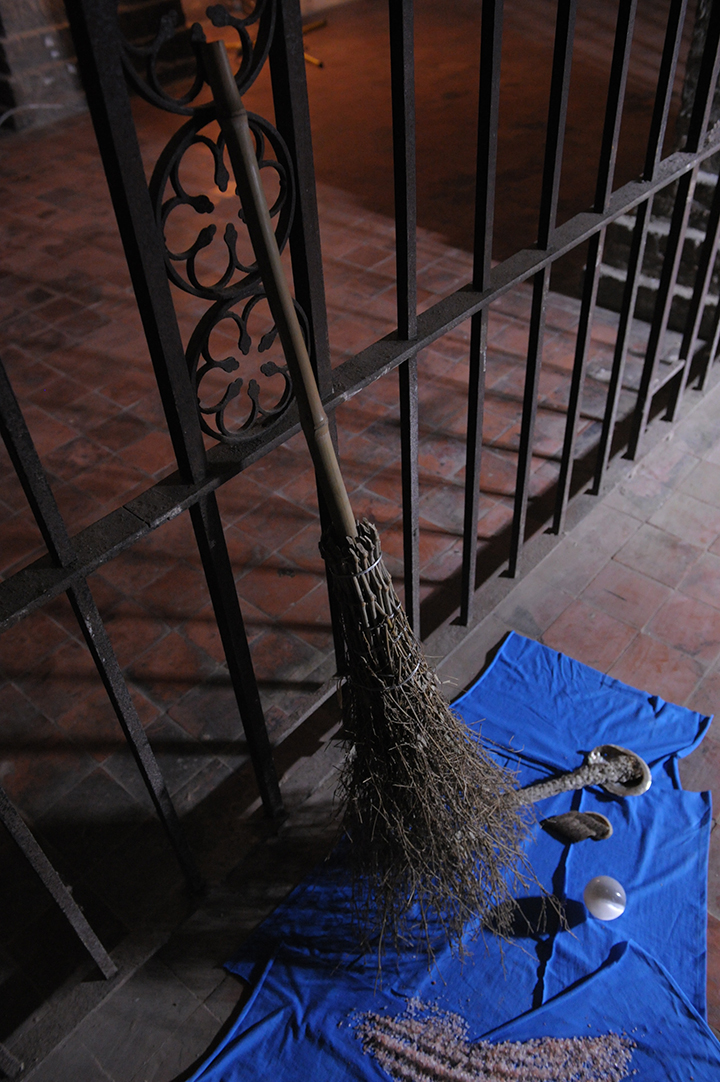
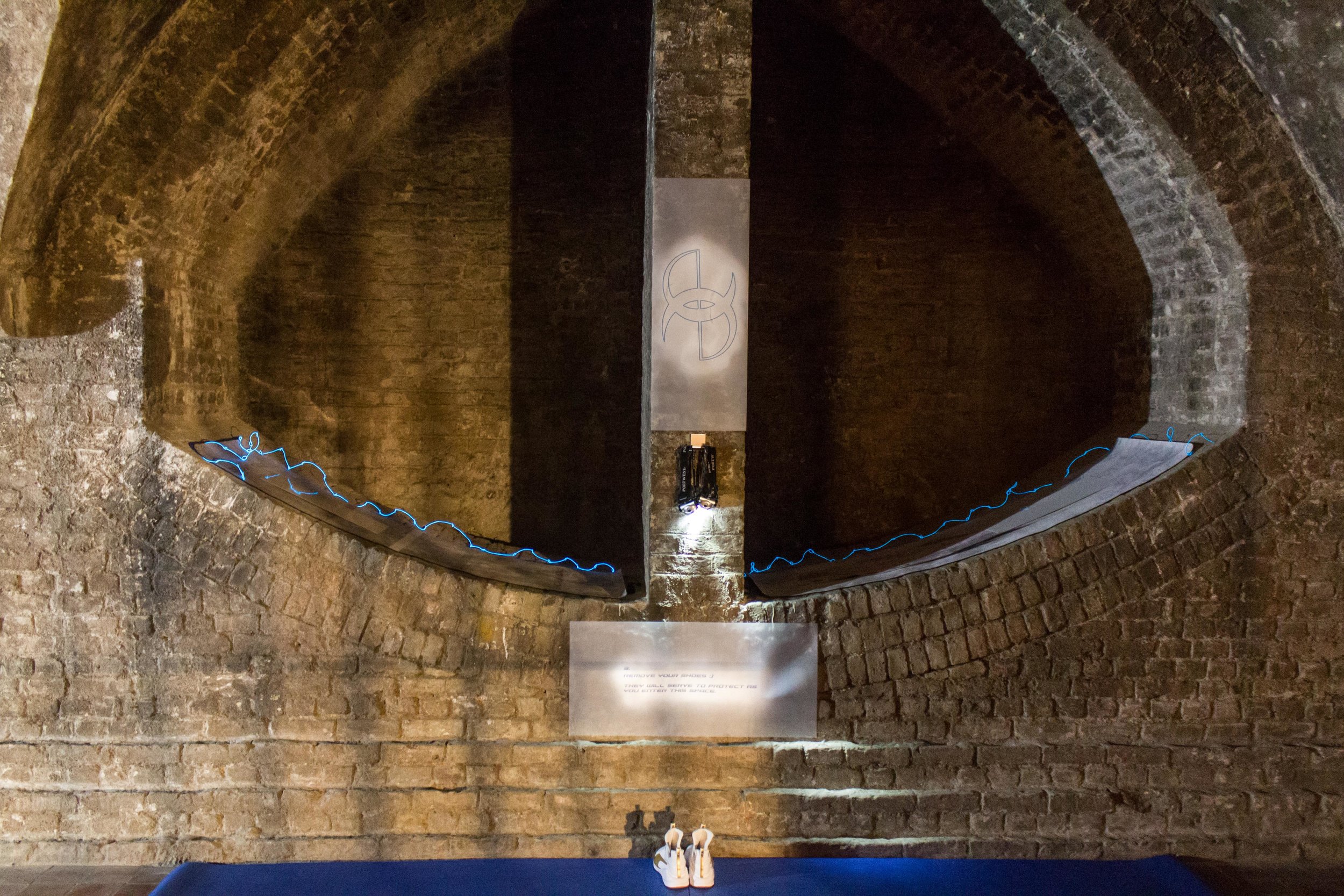
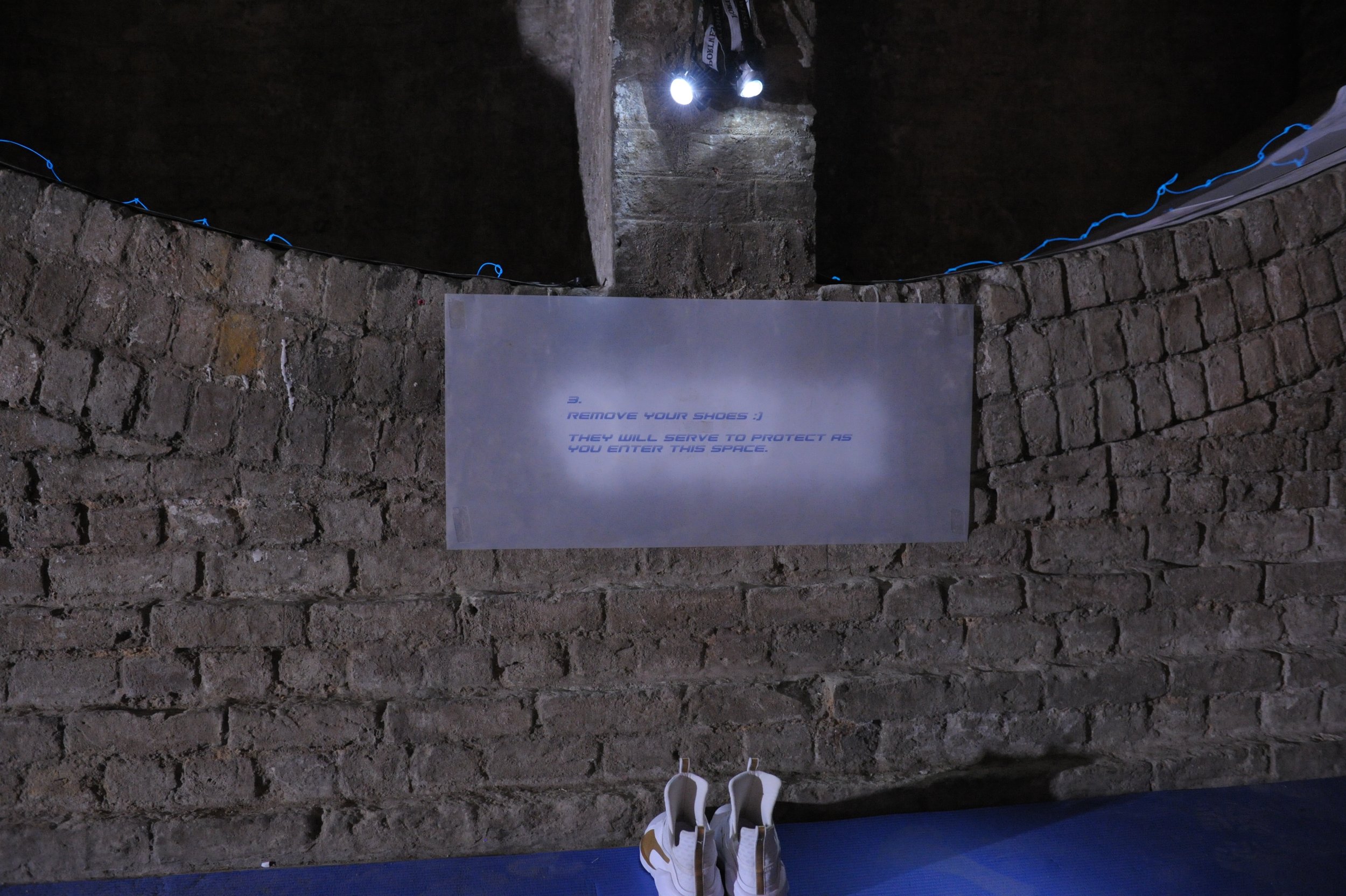


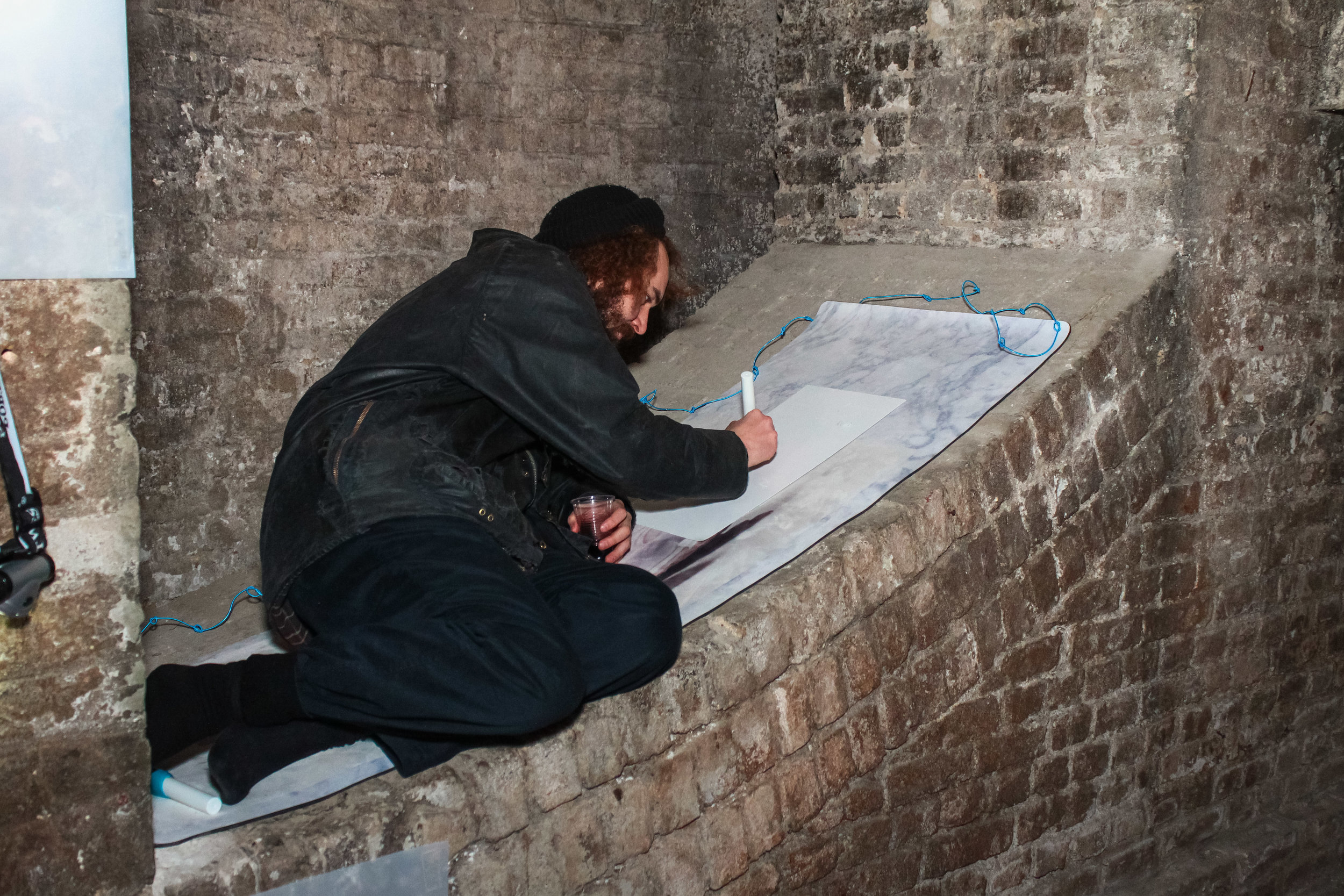

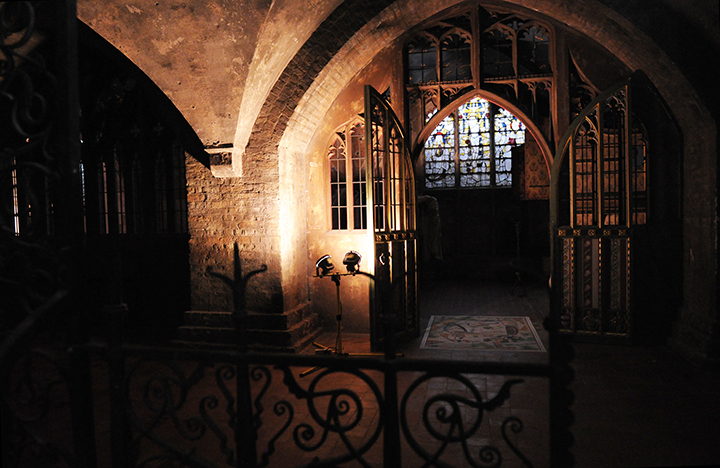

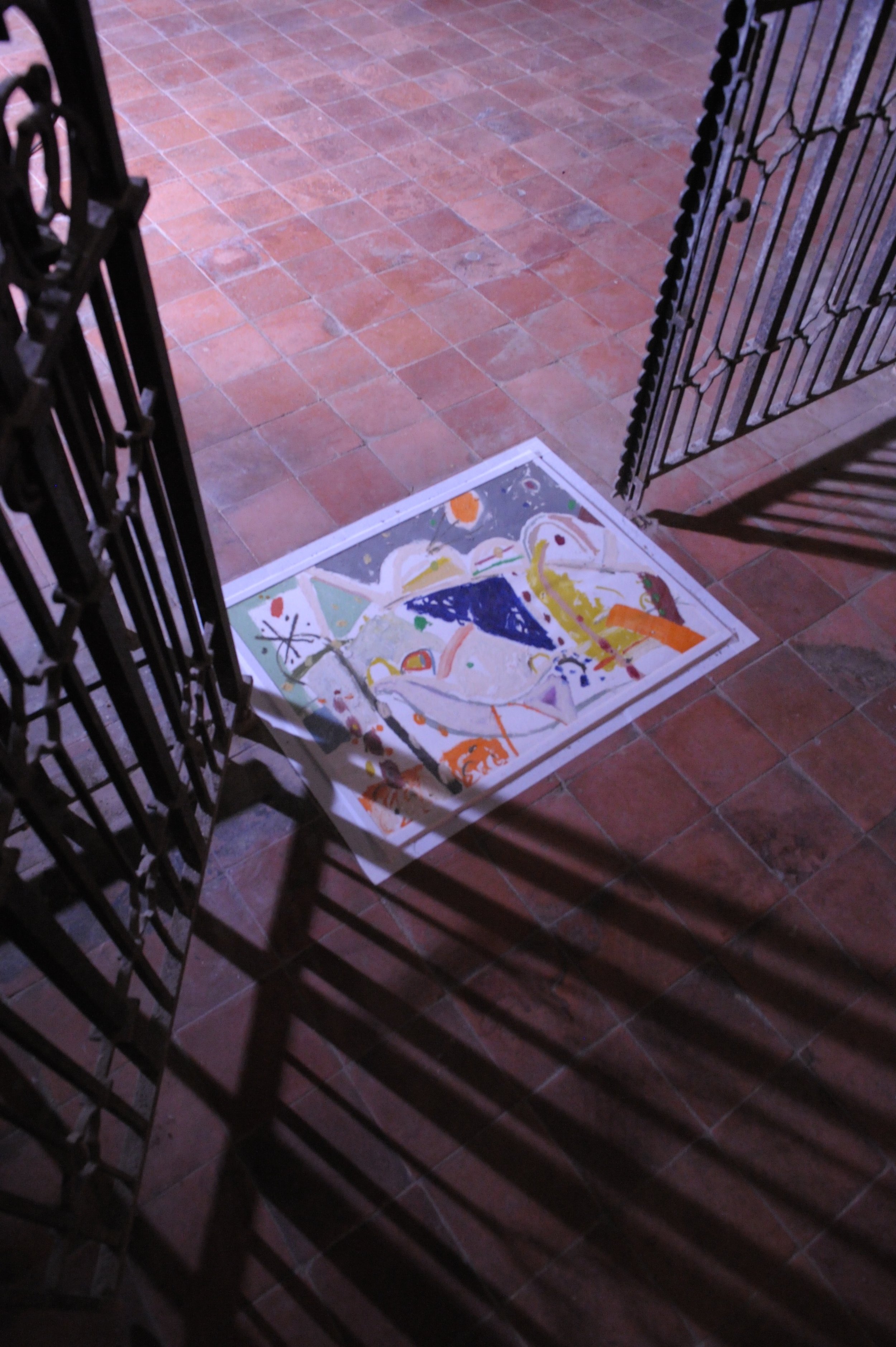
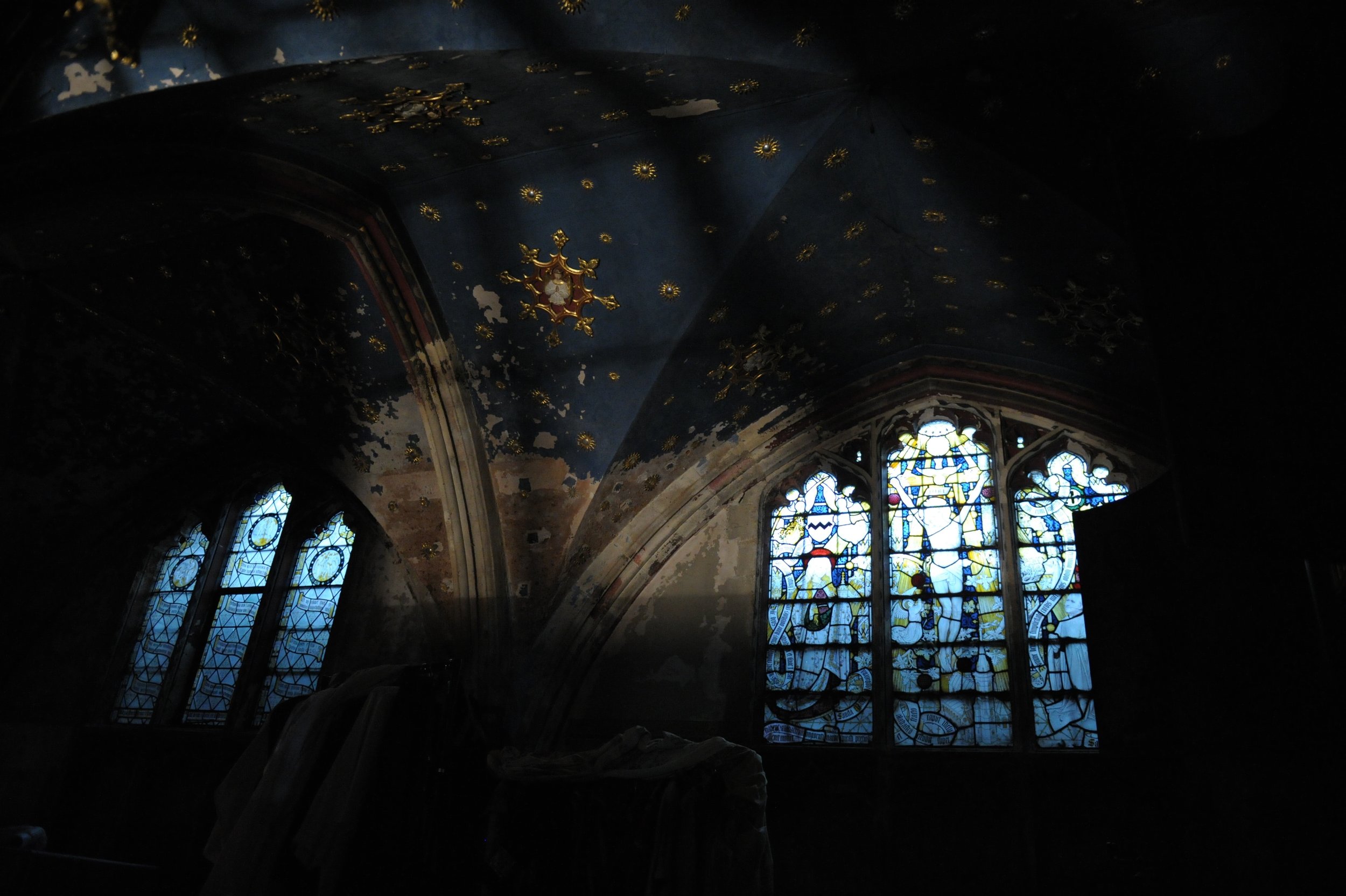
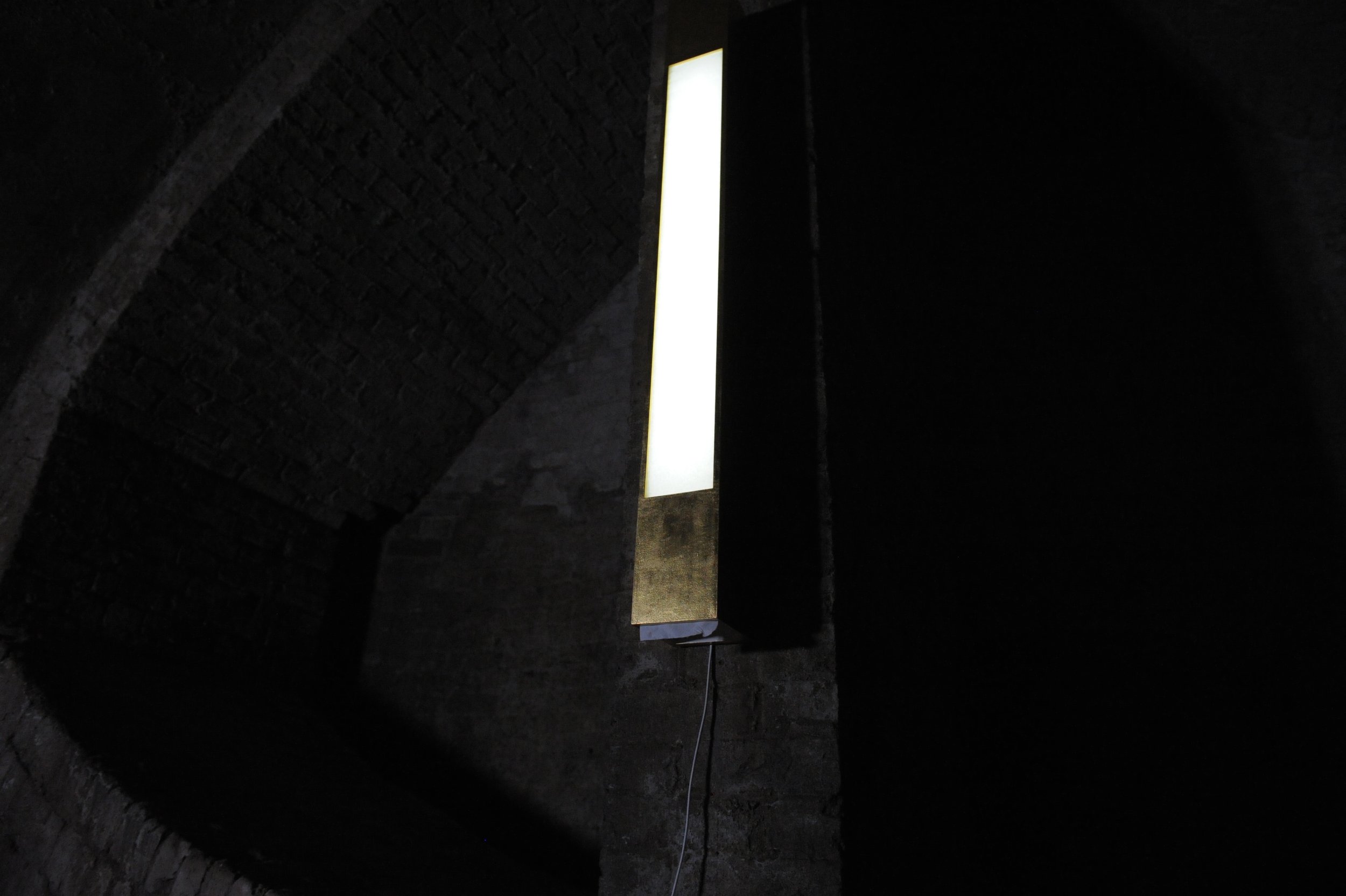
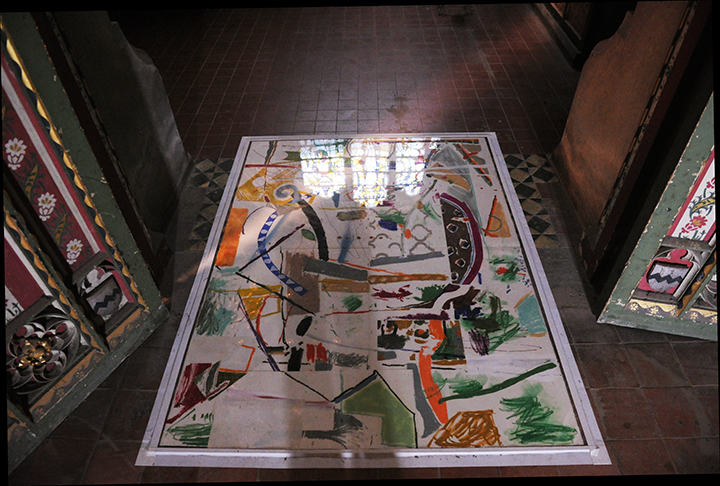

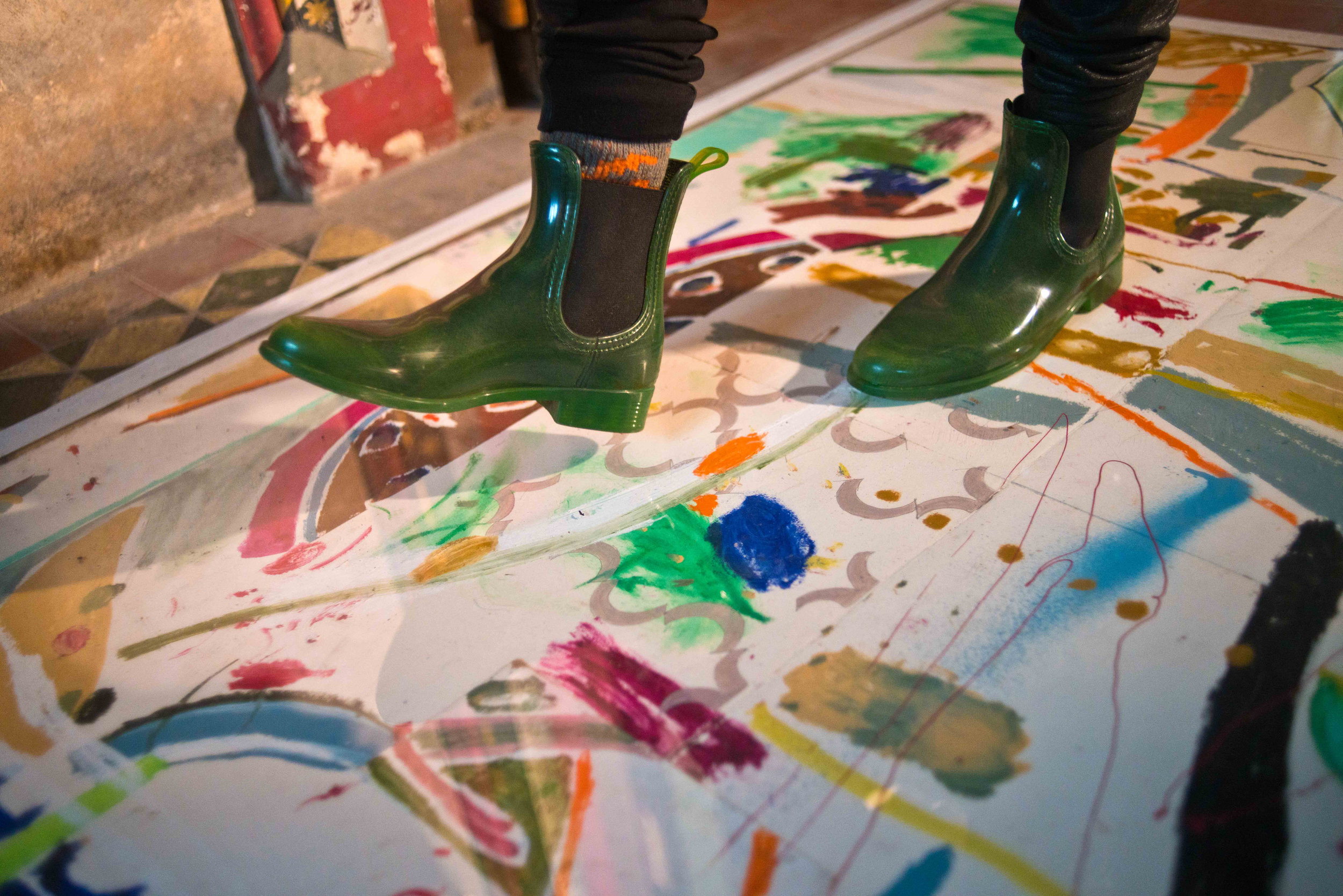
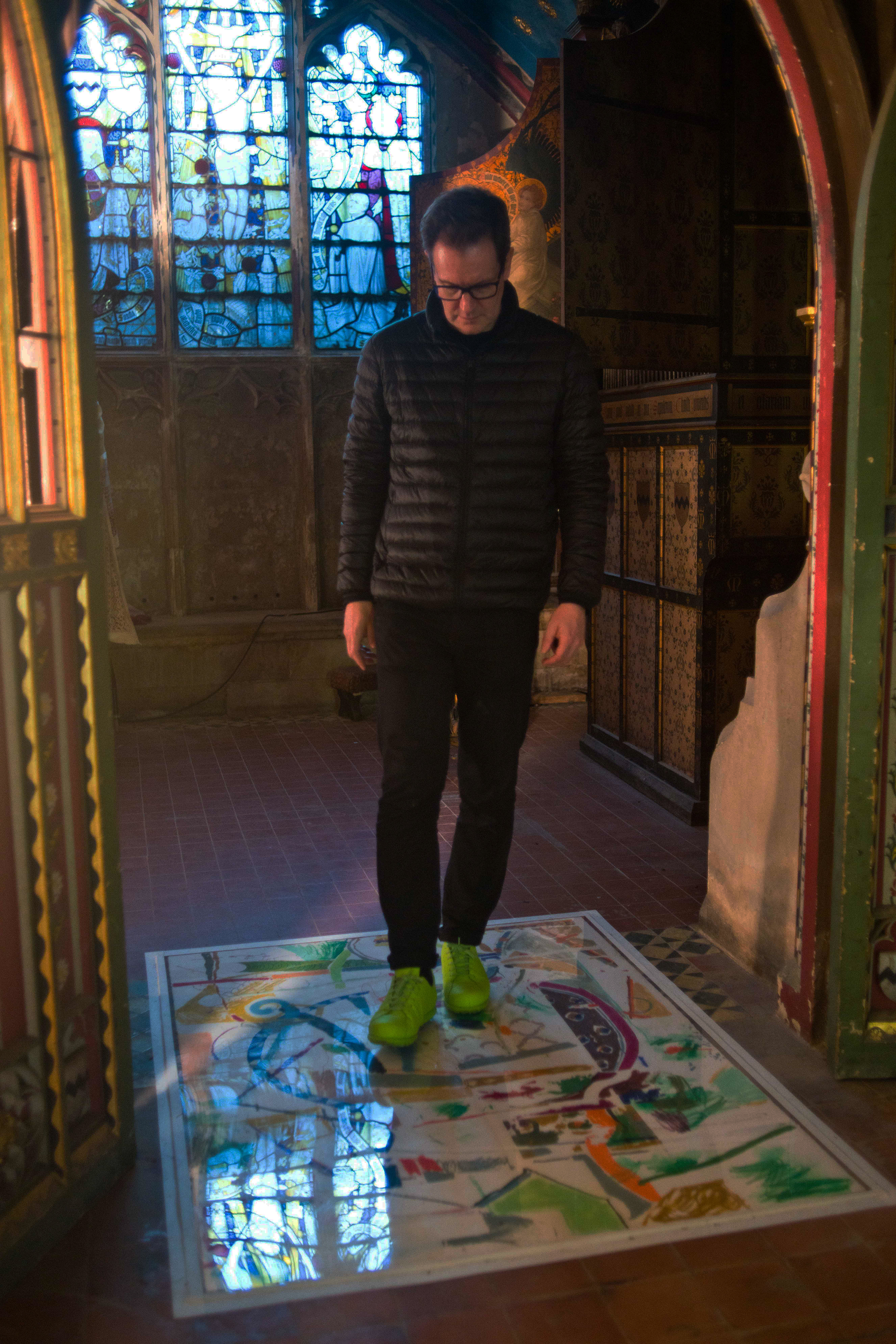

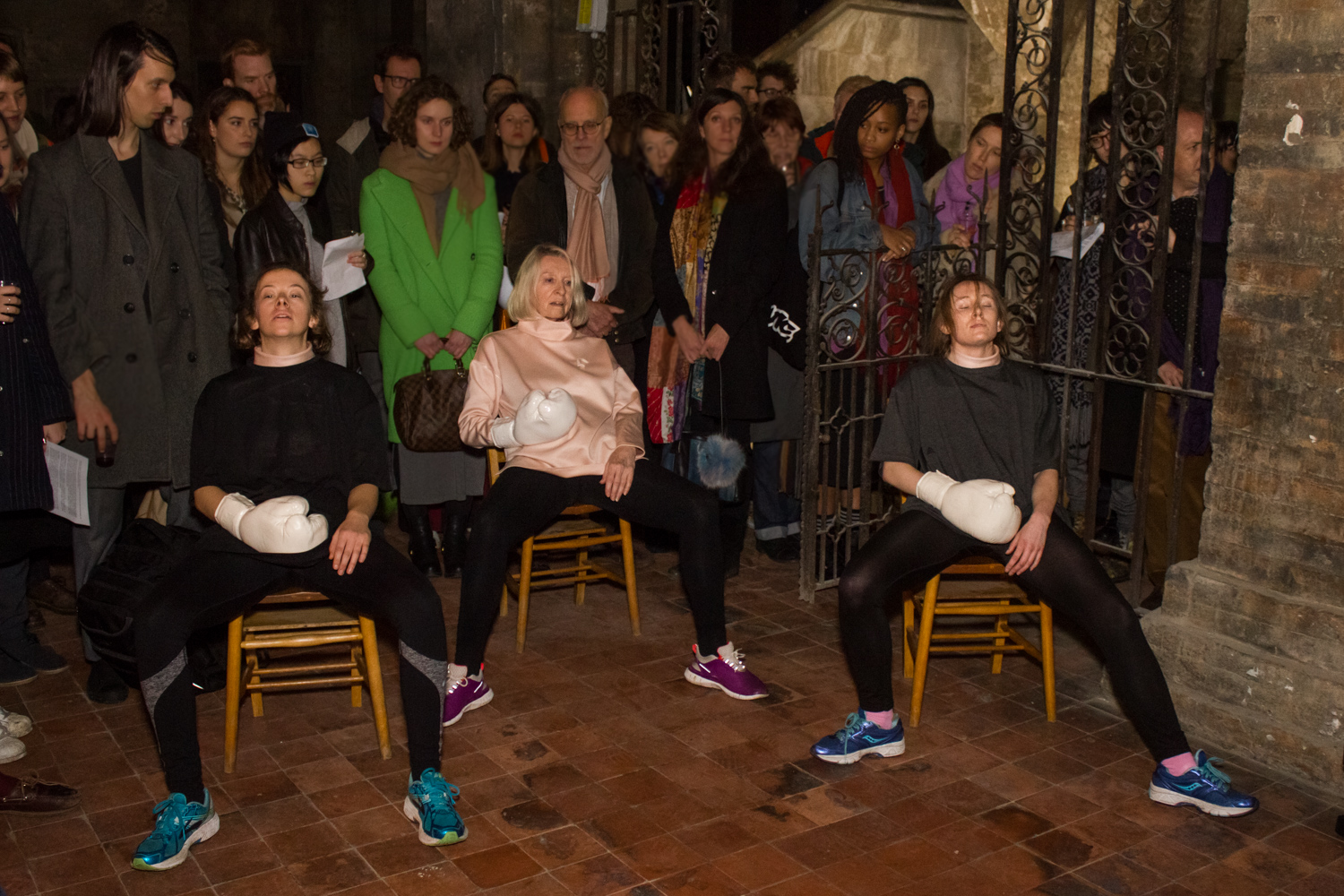
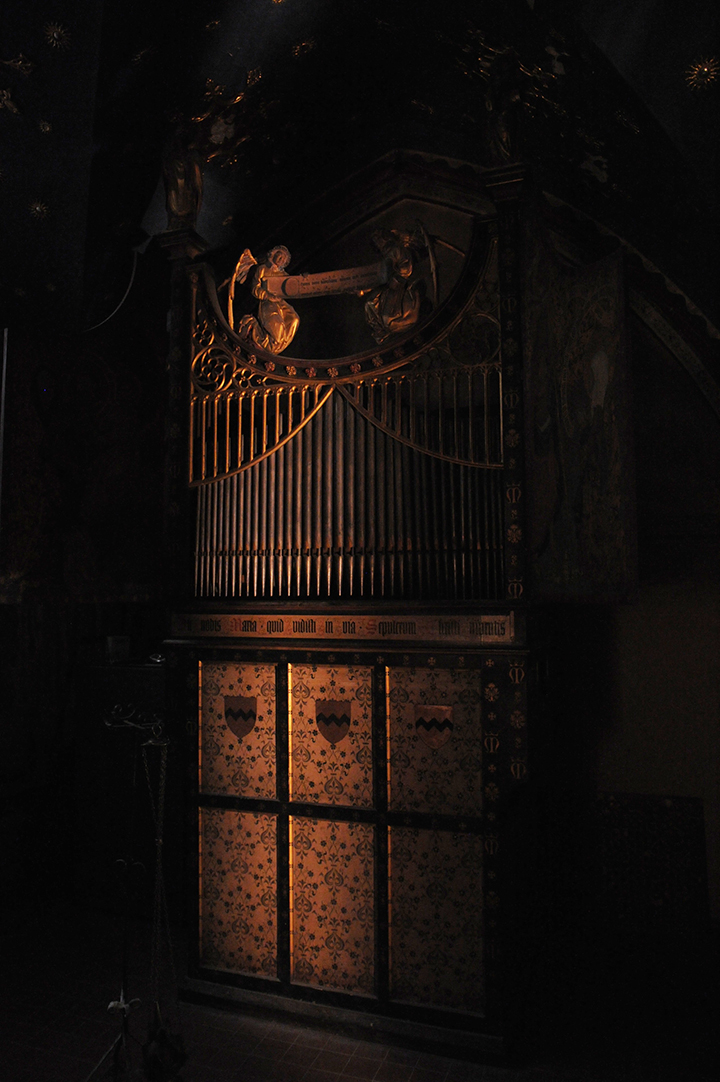
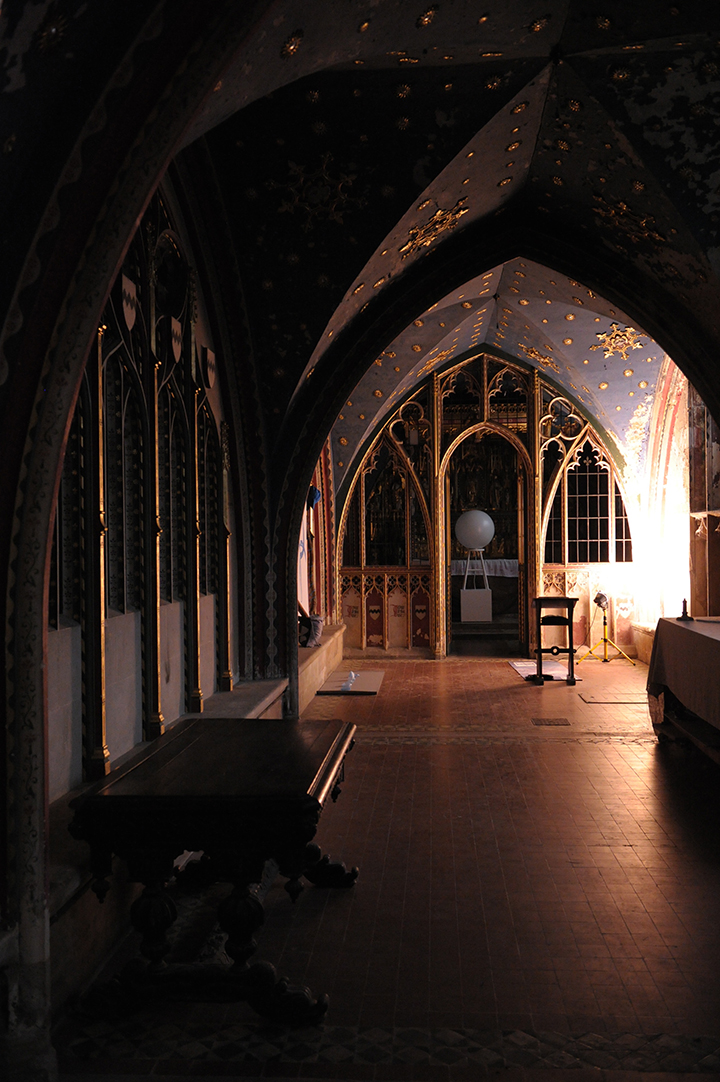
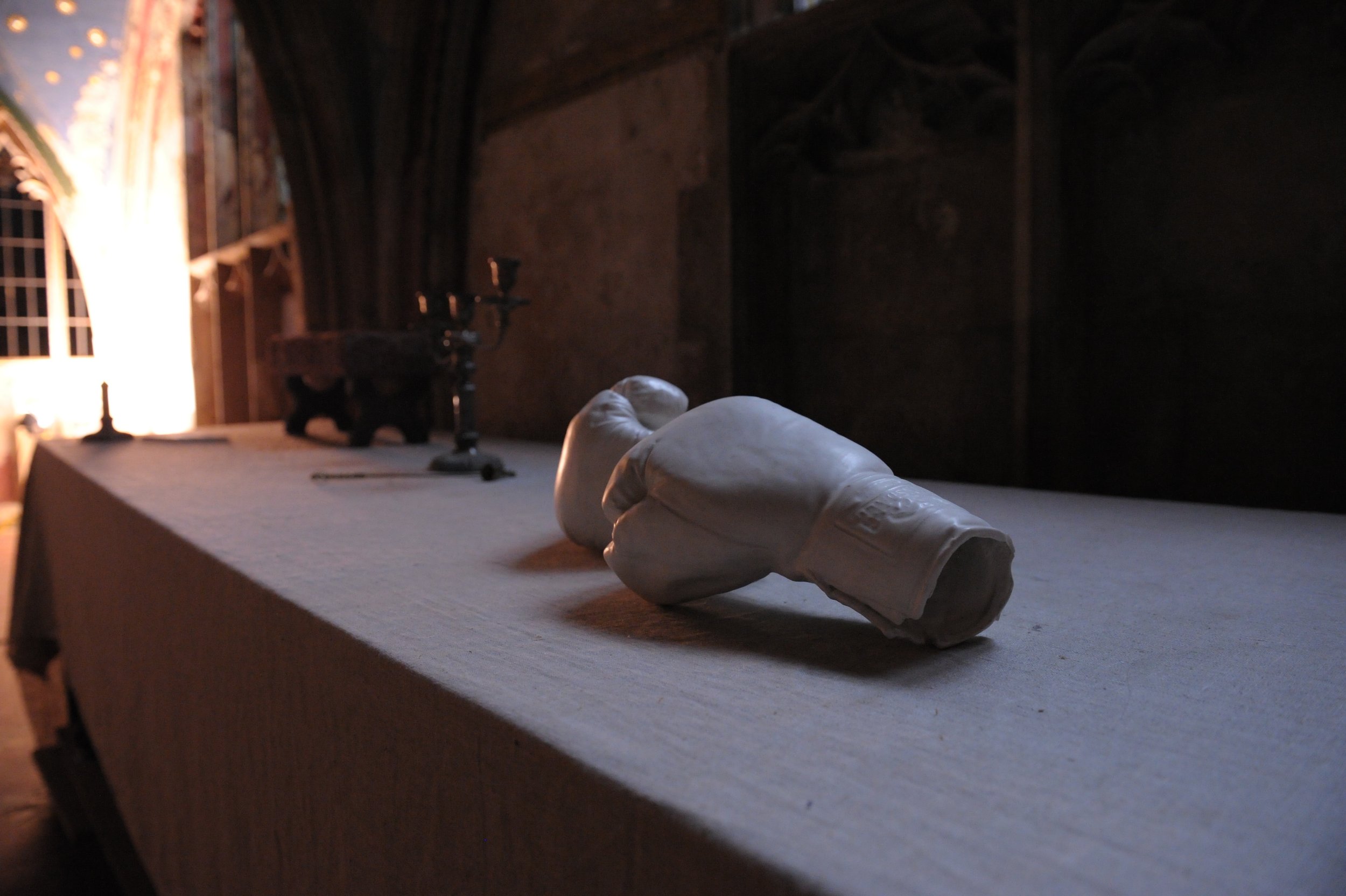

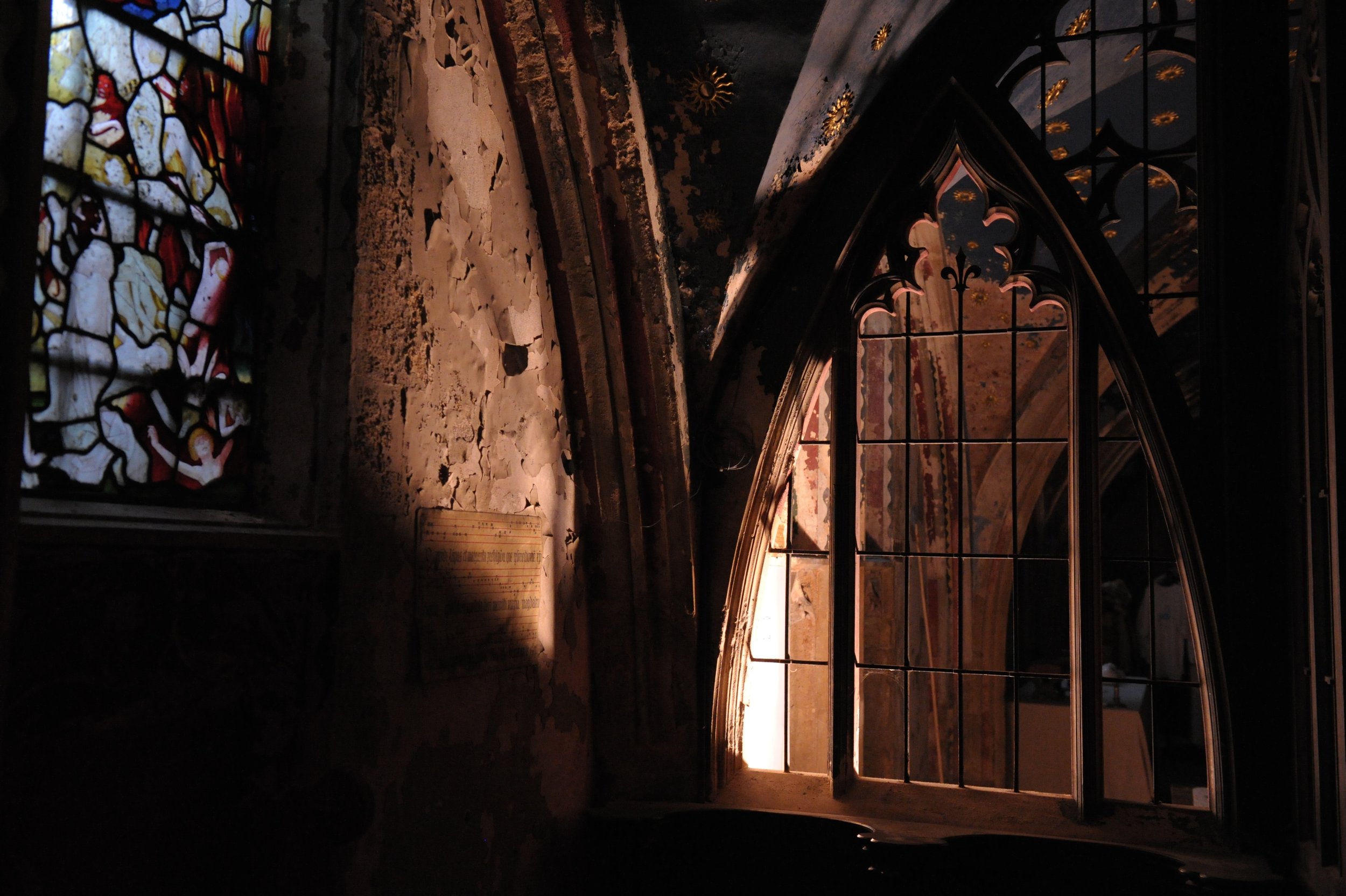

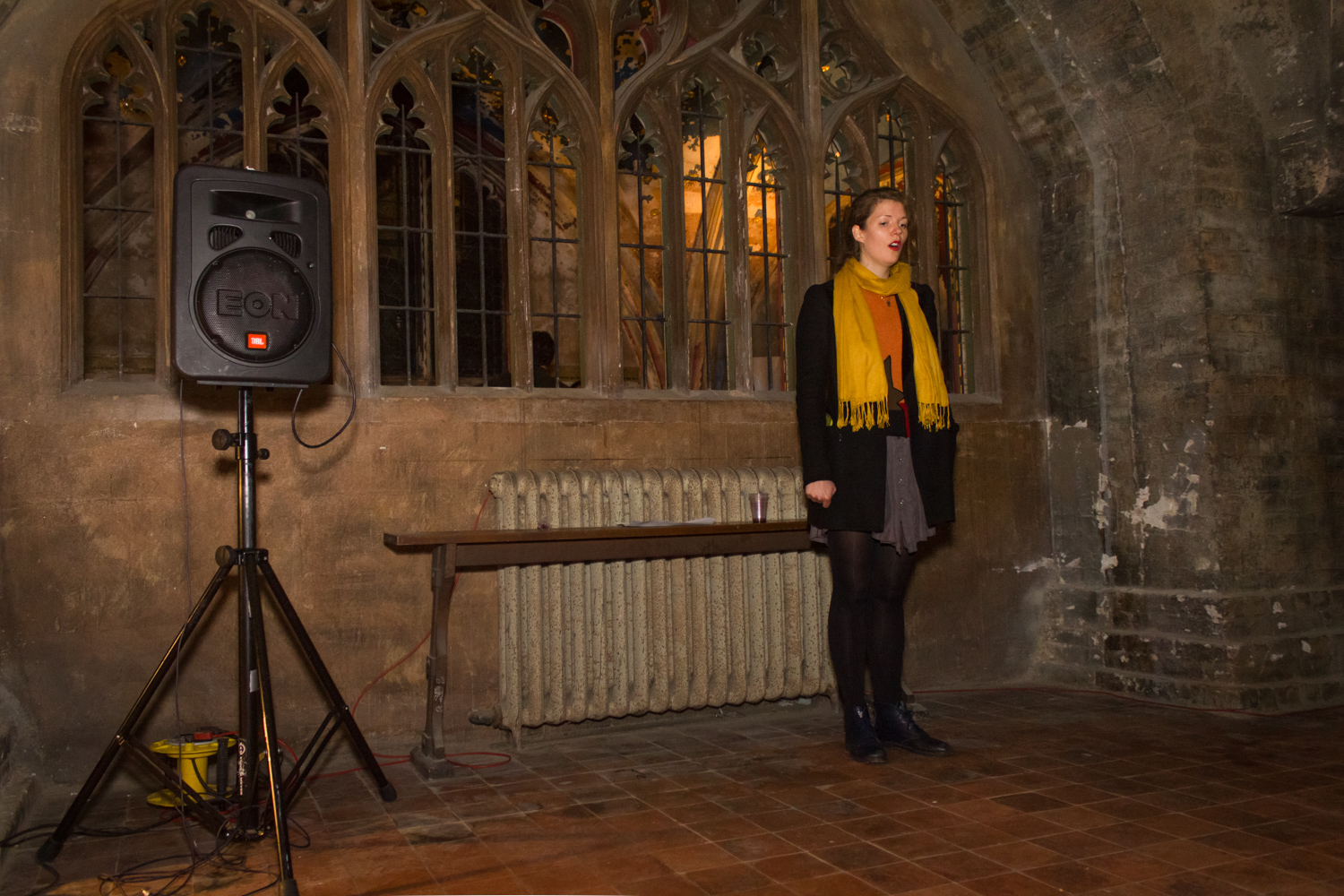
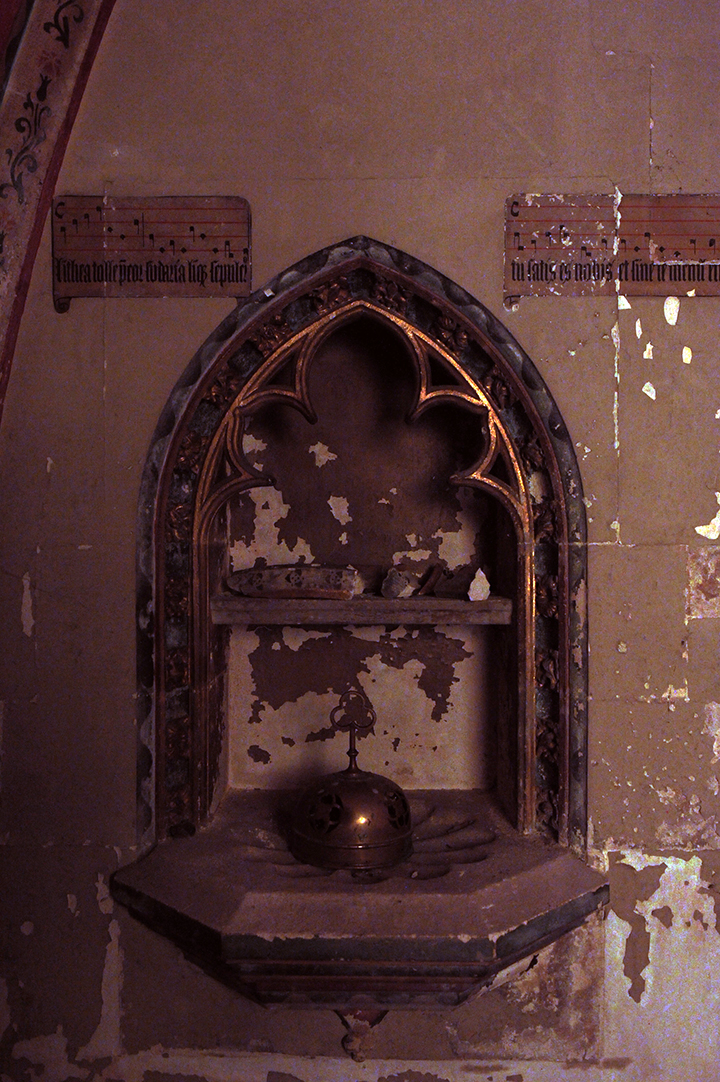
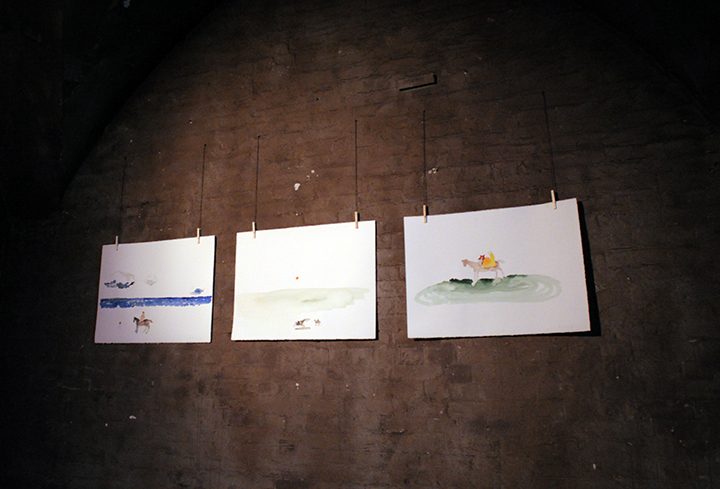



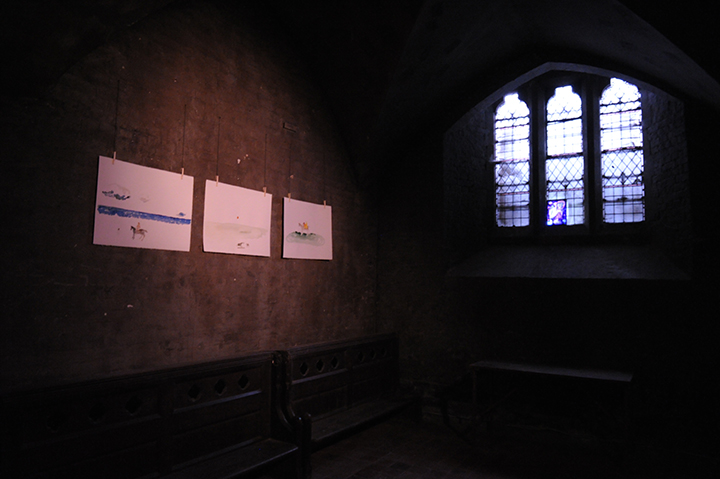
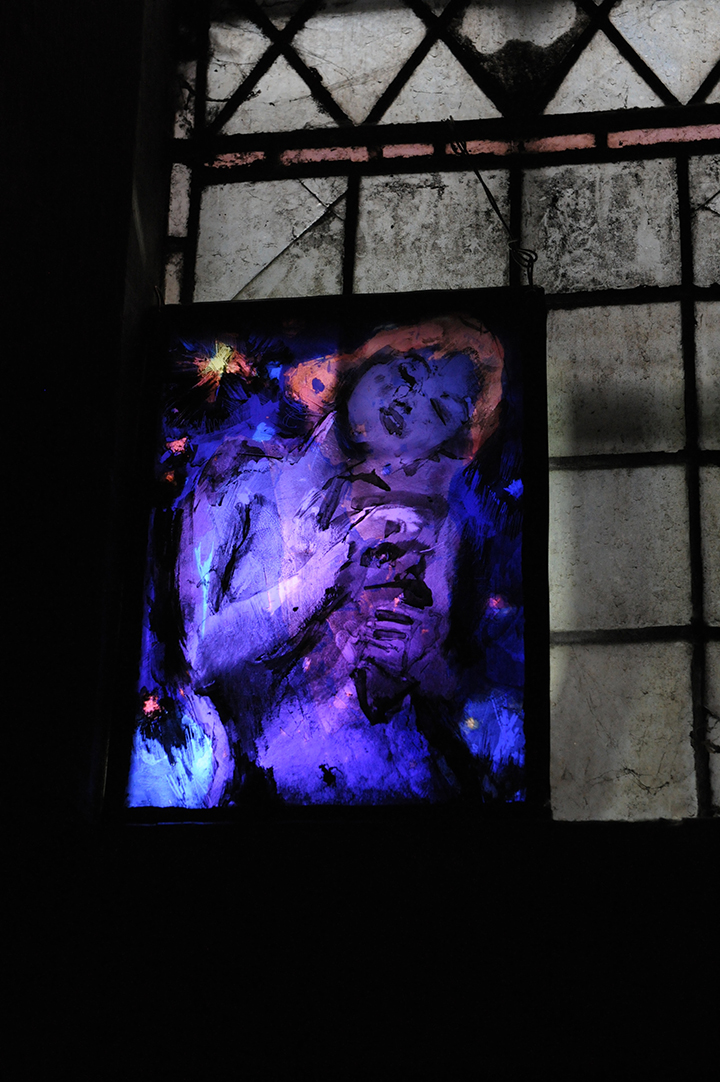
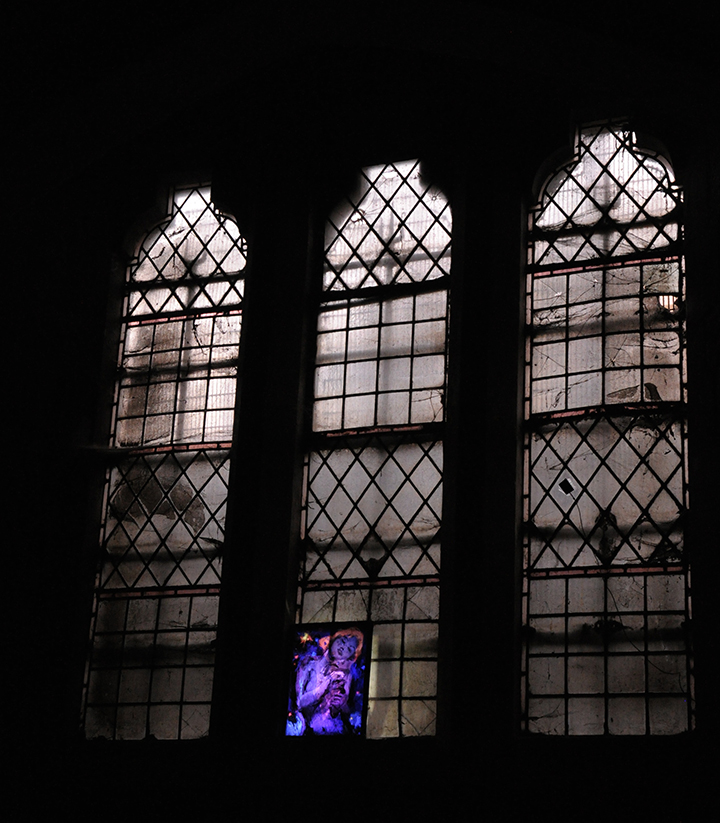


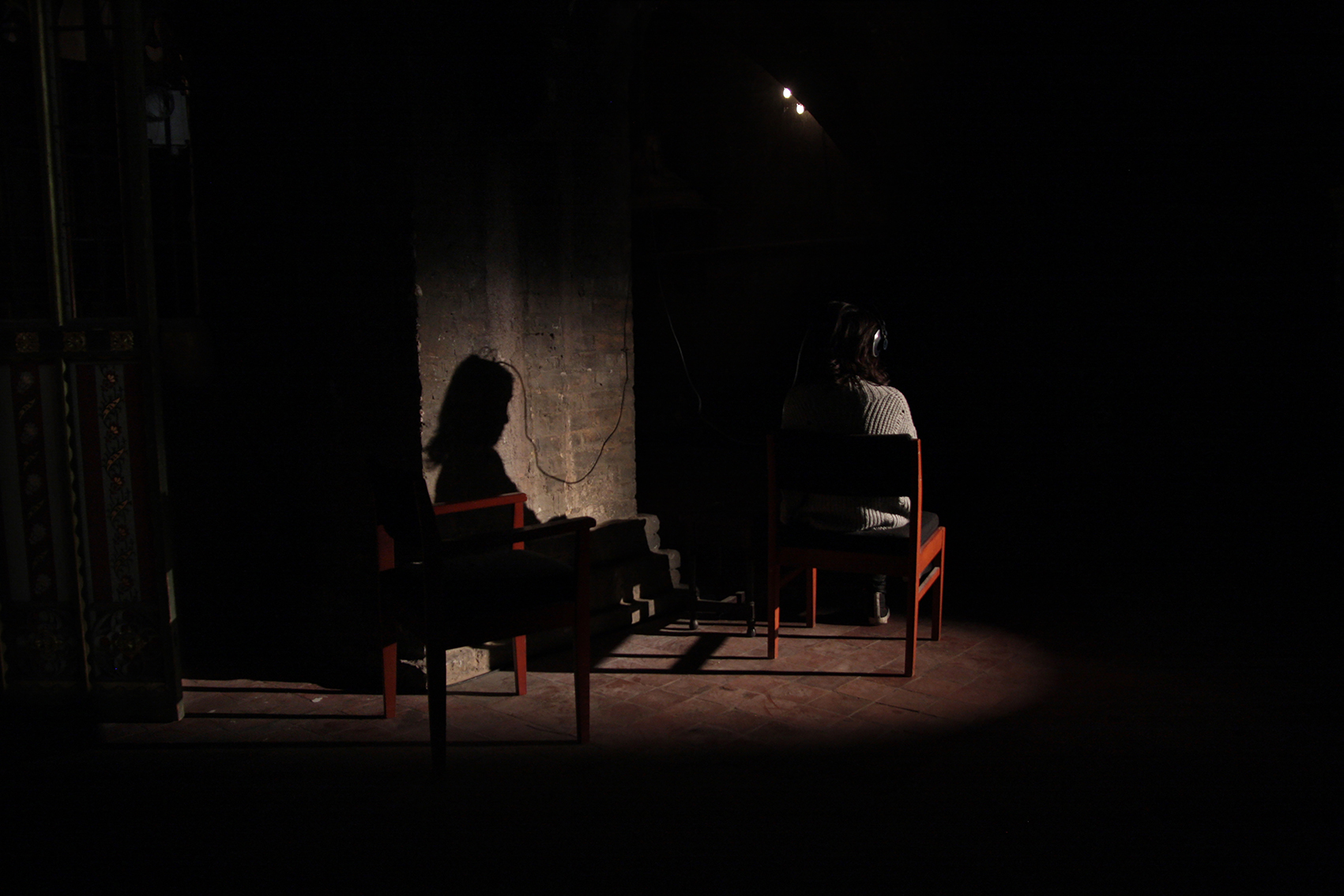
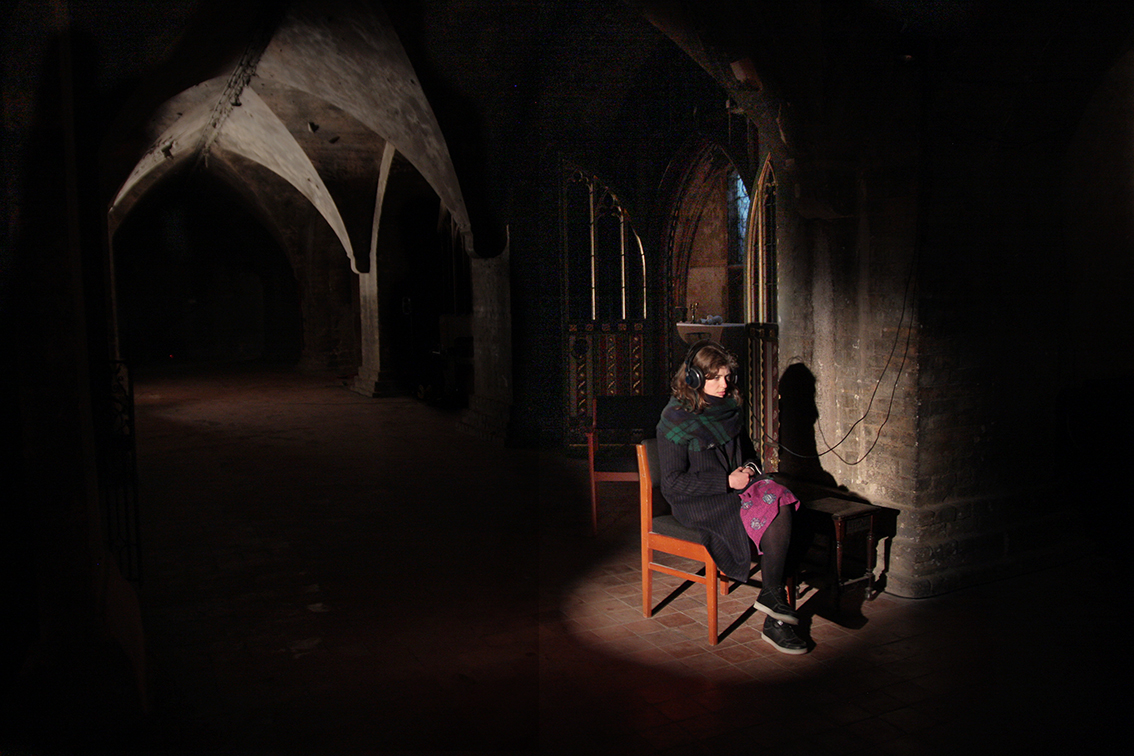
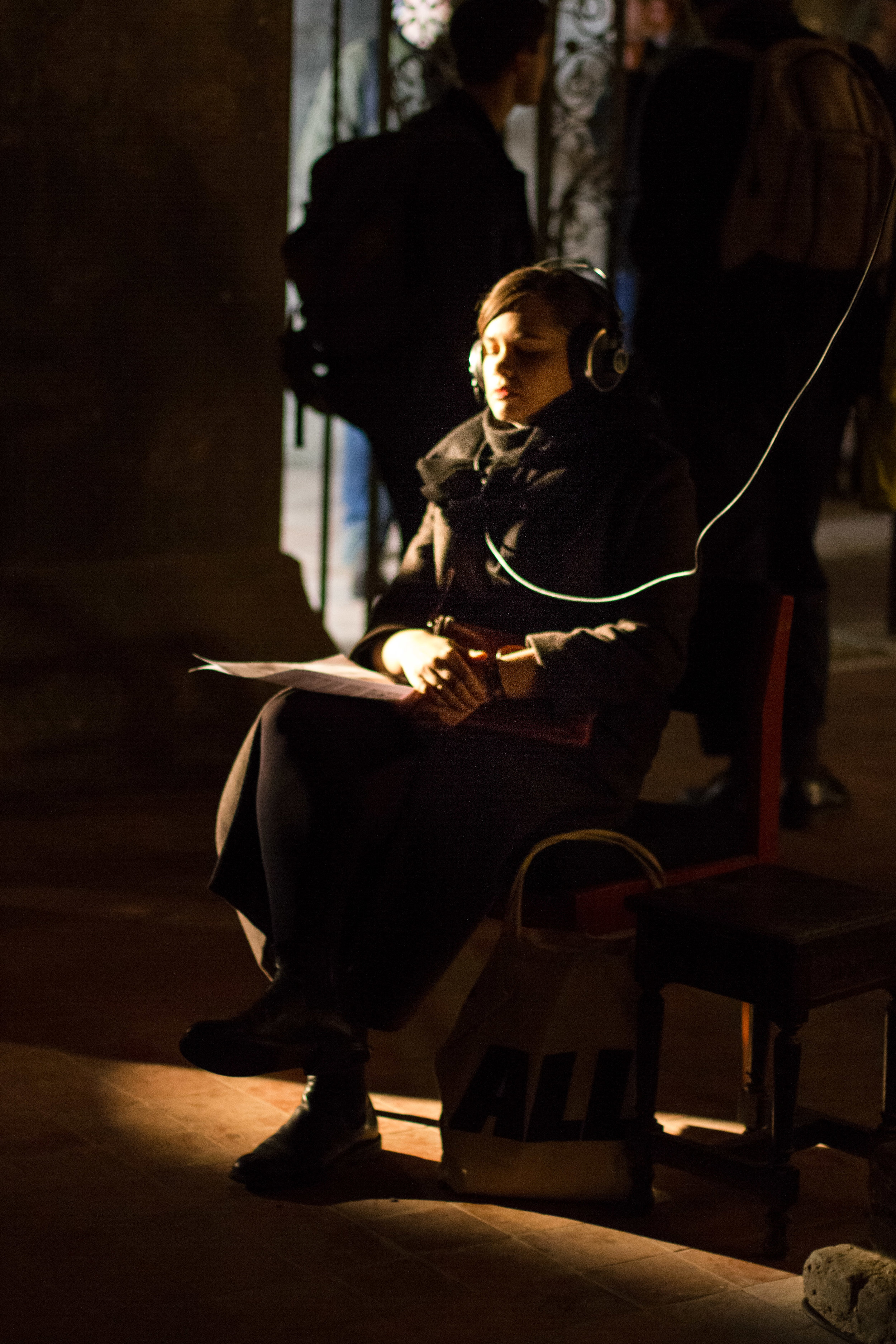
Revive! encourages reflection on the themes raised by St Mary Magdalene’s crypt in Paddington. The crypt is comprised of two conceptually distinct areas: a neo-gothic revivalist crypt and a neo-medieval chantry chapel. These two distinctive areas have generated different responses from the artists, which can be symbolised by two ways of being human that are often separated in religious doctrine, as well as in today's secular society. The chapel can be seen as the metaphorical head - the meditative, the spiritual and the interpretative - while the crypt can be seen as the body - the corporeal, the grounded and the present. These themes run throughout the exhibition and are brought together by a third: the strong aesthetics and iconography of the church. Its architecture, location and dedication are all clues to this Church’s principles, its emphasis on the female as well as its moral intentions to serve the local community.
Revive! follows Pompe, a procession of Dionysian followers that, via ephemeral performances led away from the commercialism of Frieze Art Fair, along Regent’s Park Canal to this crypt. The pagan origins of the processional format not only led revellers to a site of spiritual Christian worship, but also to one that will imminently become a multicultural community centre.
With the mission of serving the poor by spreading the Anglo-Catholic Revival, the charismatic Father Richard Temple West commissioned George Edmund Street to build St Mary Magdalene Church in the middle of the Victorian slums. Not only did Temple West manage to hire the celebrated architect, who was building the Royal Courts of Justice at the time, but he also attracted hundreds of nobles to cross London and attend his services, lining the filthy streets with their smart carriages.
The surrounding area was renowned for prostitution and housed the infamous Lock Hospital for venereal disease. The dedication to St Mary Magdalene consciously referenced the church’s desire to reach out and help working class women and prostitutes. From its founding until the 1950s, nuns from Wantage ran a home for single mothers who had to give up their babies in order to work. Lucinda May has reinterpreted the plainsong notation still visible on the walls of Ninian Comper’s Chantry chapel dedicated to Mary Magdalene. Lift, played every 30 minutes, recalls the Wantage Sisters’ monastic rhythms of worship and prayers. Recorded in the crypt and then played back into it, it travels through the space, remembering its past and projecting forward. By appropriating what was originally sung by men in Latin, the piece is both celebratory and subversive, recalling the subtle autonomy of the Sisters as well as Jesus’s respect towards women.
STASIS’s work (with guest performers Jean Woollard and Imogen Mason) also speaks of female strength and presence. In It Just Keeps Happening, rave meets eternal rest. Built on the heavy bass-line of a grungy emo electronic radio mix, and using Paloma Proudfoot’s ceramic boxing gloves as its visual and conceptual anchor, the work explores ambivalence, ennui and ageing. Its recontextualisation in the crypt gives the piece a more sinister and imposing edge. The performance was performed over the opening evening and now Proudfoot’s boxing gloves remain as residue.
There are visual references to Mary Magdalene throughout the church. On Comper’s altar there are episodes representing Mary’s life. It is not clear whether these are all Mary Magdalene or three different women assimilated into one. In fact there is no explicit reference in the bible that Mary Magdalene had formerly been a prostitute even though her myth says otherwise. Nevertheless in an age where female sexuality was a threat, she was a powerful example of repentance. Carolyn Barker-Mill has replaced some of the missing stained glass in the crypt. Inspired by the church’s references, her MM speaks of female power today. It plays on the role of the female body within Christian iconography and contemporary mass media in relation to gender history and the masculine gaze, where female sexuality is used as a way to denigrate power and social legitimacy.
Pavel Pepperstein’s three paintings depict lyrical journeys of unknown riders. Inspired by the Doors’s Riders on the Storm from their album ‘L.A Woman’, they fuse popular culture with myth and cast mystical hallucinations, dreamscapes populated with audacious riders. Within this context, the presence of confident and wild naked females, in charge of their own destiny, speak of the sexually empowered Magdalene. Reflected in the iconography of the altar, Mary Magdalene is traditionally depicted with her hair loose, despite Jewish culture dictating that women must cover their heads. The unnamed statue opposite these works looks on.
Before the advent of body preservation, this crypt was used for storing bodies before burial. Several of the works play off a heightened sense of bodily awareness in the space. Jonathan McCree reflects on the Christian belief that the soul of the dead transcends upwards, away from the corporeal that is buried in the ground. By walking over his works, intimacy shifts - we become more self-conscious, and our perception of the ground beneath us changes. McCree uses a physical relationship with a painting to explore transformations within the body, which in turn suggests a link to Christian ideas about what happens to the body and soul after death.
Hans Rosenström’s Some Bodies Language is a site-specific recording which plays on our perceptions of the space. The work is visually and audibly activated by the viewer and only exists in that moment. Through a perceptual experience of movement and rhythm, it weaves an invisible structure between the listener, the space and other presence. The work was Choreographed by; Harriet Latham, Marina Capasso, Thomas Etheridge and Hans Rosenström
Alan Magee’s work forces consciousness of an individual’s morality as it juxtaposes the implicit morals of the sacred space with the revivalism of current nationalist tendencies. Airborne is a radio transmitter limited to the confines of the crypt and infecting the space. It silently broadcasts offensive and politically irreverent jokes from an air vent. By choosing to engage with this content we are presented with the irresponsible nature of racism. Just as religion has the capability to justify acts of evil, racism can be masked or legitimised by jokes. What is humour? If the viewer chooses to ignore the explicit warning they are also passive observers.
Col Self’s project is in two parts, one activates the viewer’s (perhaps) spiritual memory or nostalgic name recall in the chapel, while the other demands physical interaction through carving this name. Her work engages with ritual in our age of technology and accelerated sportswear gear queer. Instead of the neighbouring crucifixes and icons, we find ritualistic objects from the ancient to the personal that have been three-dimensionally scanned and printed, losing their unique status in the process in a 'death of affect' (Crash, J.G Ballard). Signs and signifiers of an online community, instated as sacred symbols of commercialism. If the viewer is convinced to become a believer (in post apocalyptic mash up of symbols), they can participate in Self’s ritual of name-engraving into metal sheets in the corporeal side of the crypt – a way of connecting to our ancestors in a future time.
Strategically positioned in the crypt, the elaborate Chantry Chapel was in danger of being destroyed by the anti Anglo-Catholic movement who aimed to disrupt services and destroy church interiors. Such was the threat to the order of Protestantism by this rising circle. Ninian Comper, who designed the Chapel, even built a secret tabernacle in the altar to protect the holy sacrament from potential thuggish intruders. The colour, pomp and ceremony of the Anglo-Catholic’s new form of Christianity is echoed by Adam Barker-Mill, whose work plays off the chapel’s majesty and reflects its gilding - Like elevating a toilet-roll dispenser to the glowing and decorative - hints at the sacred. The supernatural Glowb reflects a delight in colour - an engaging and mysterious device similar to those used to enthral a growing audience of believers.
Continuing the initial social mission of the church, St Mary Magdalene and the Paddington Development Trust have just been awarded a £3.6m Heritage Lottery towards renovating and building a community arts centre. Niklas Gustafson’s Construction responds to the architectural, social and cultural history of the Church. His work recreates a space that is free from form, scale or linear narrative - where the crypt’s spirit and fragments of its past and future life co-exist. A meditation on the building; partially abstract and partially representative, the imagery is built up from new and archival footage of the church. The computer generated sound accompanying the videoscape is inspired by the sound heard from the organ recitals taking place above the crypt. This work and the others in the show raise questions as to the relevance of this space within today’s multi-cultural and largely secular society.
Galitzine MacKenzie's exhibitions are often motivated by a desire to draw attention to and include local communities. Revive! continues this ambition. The church, together with the Paddington Development Trust, are raising funds to create a community and heritage hub in order to enrich, regenerate and bring greater cultural cohesion to the local area as well as to support the restoration of the Grade 1 listed church building. Revive! aims to draw attention to this cause and the project will reach out to various vibrant community groups active in the area.
Please donate generously here to their cause and help make this project a reality.